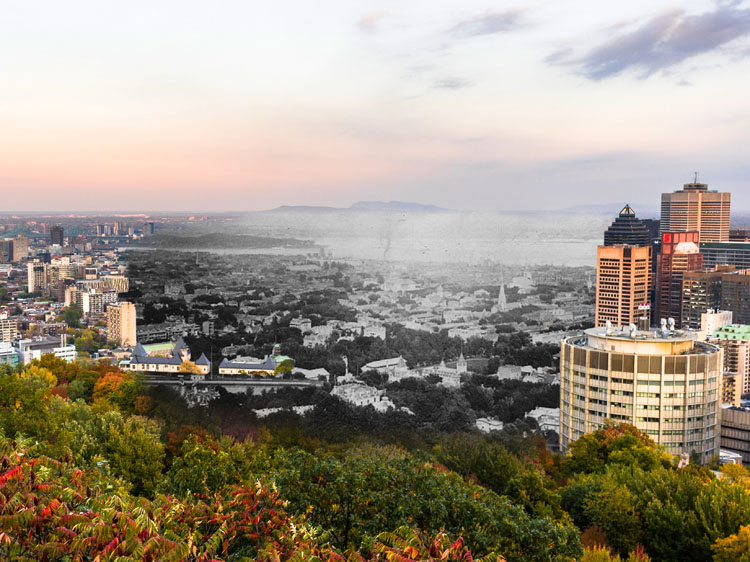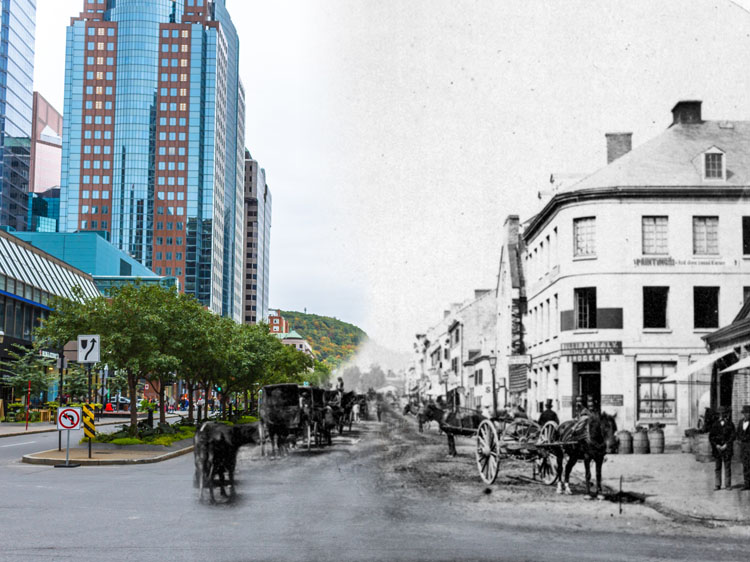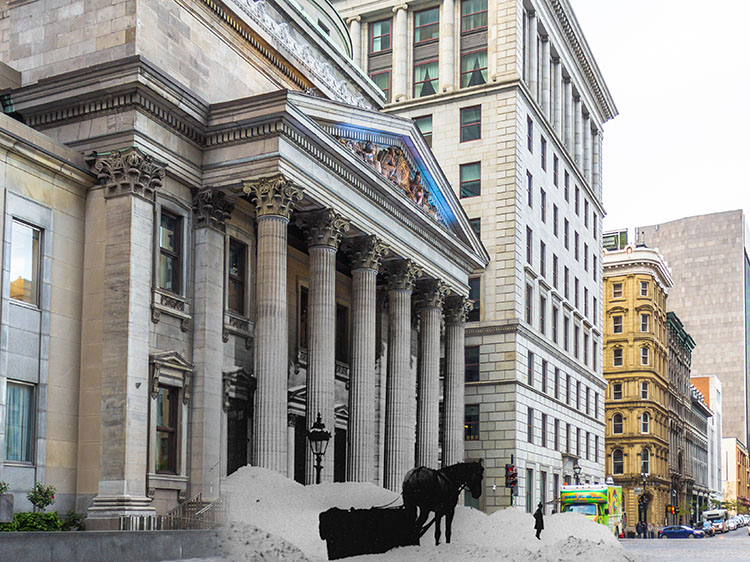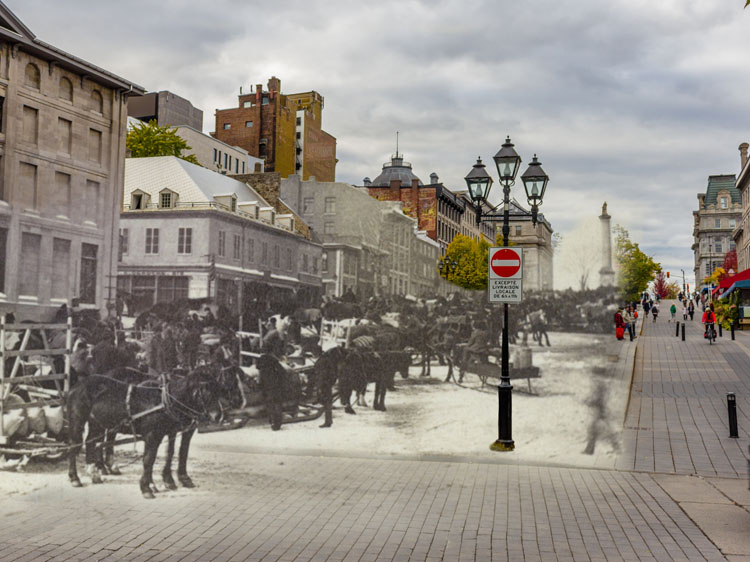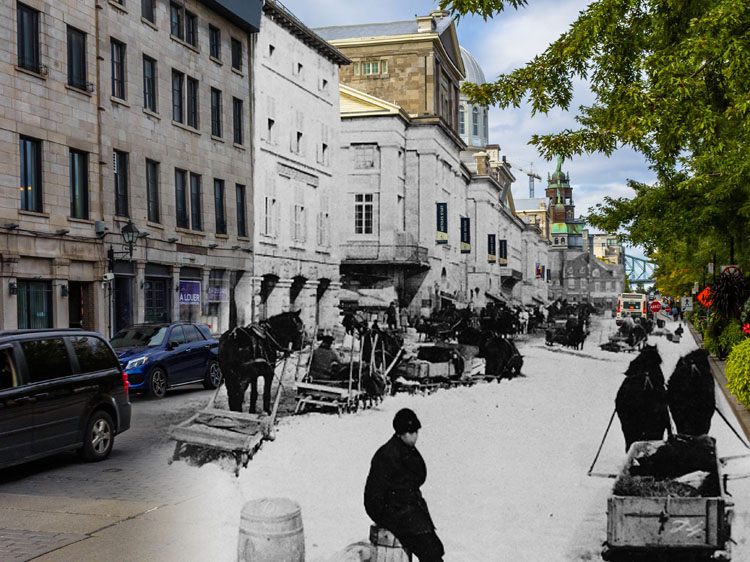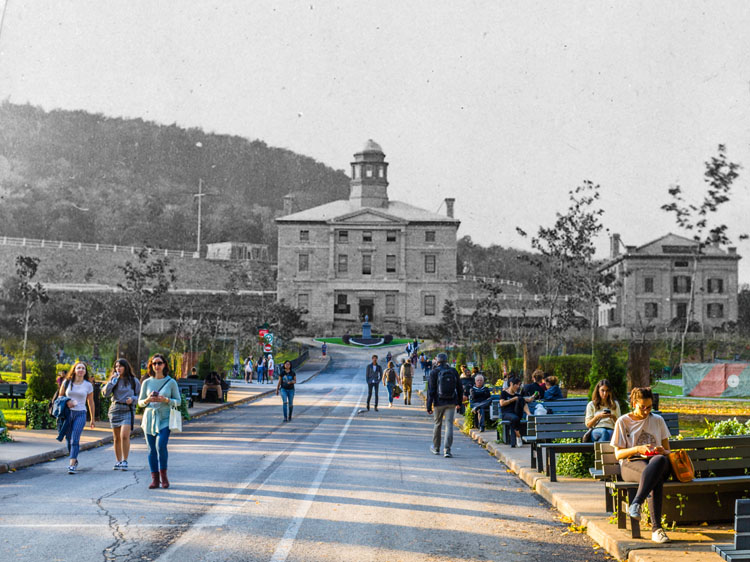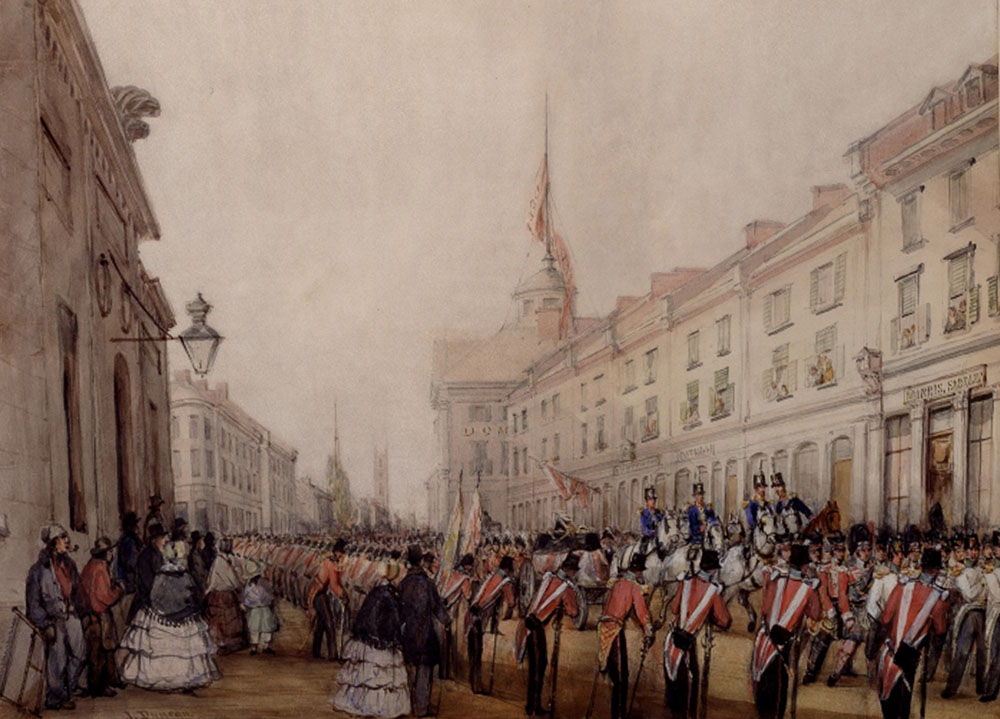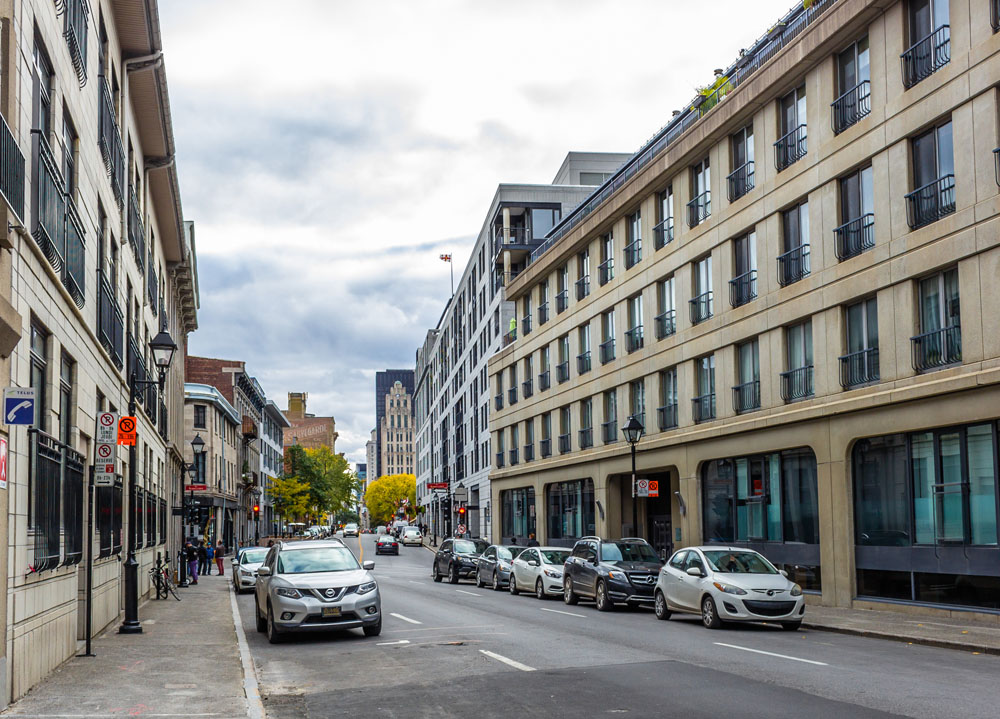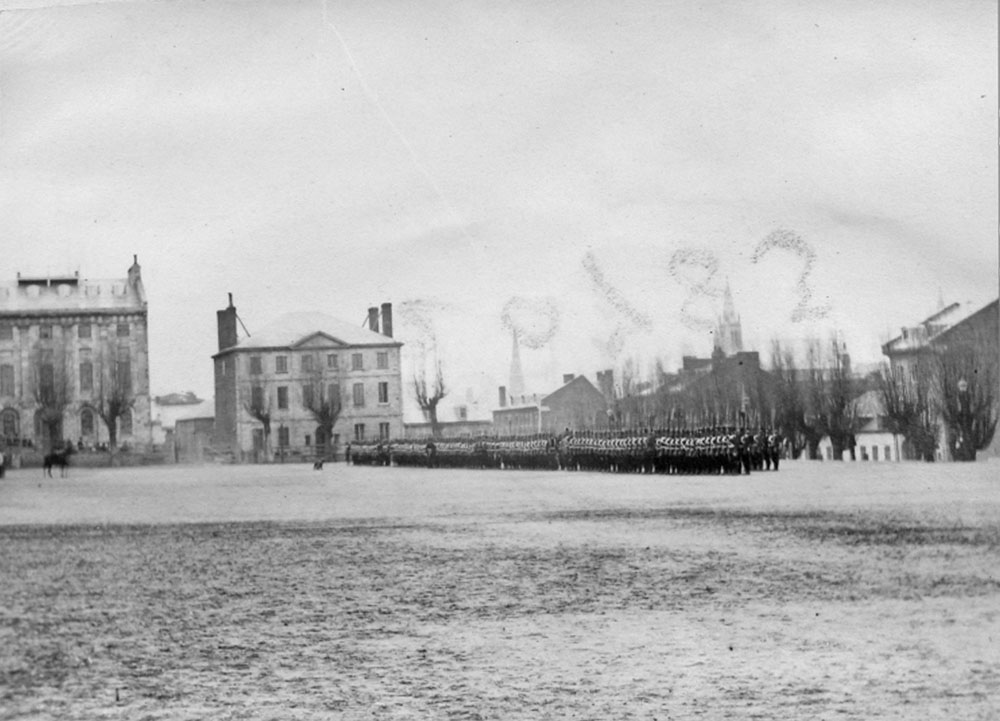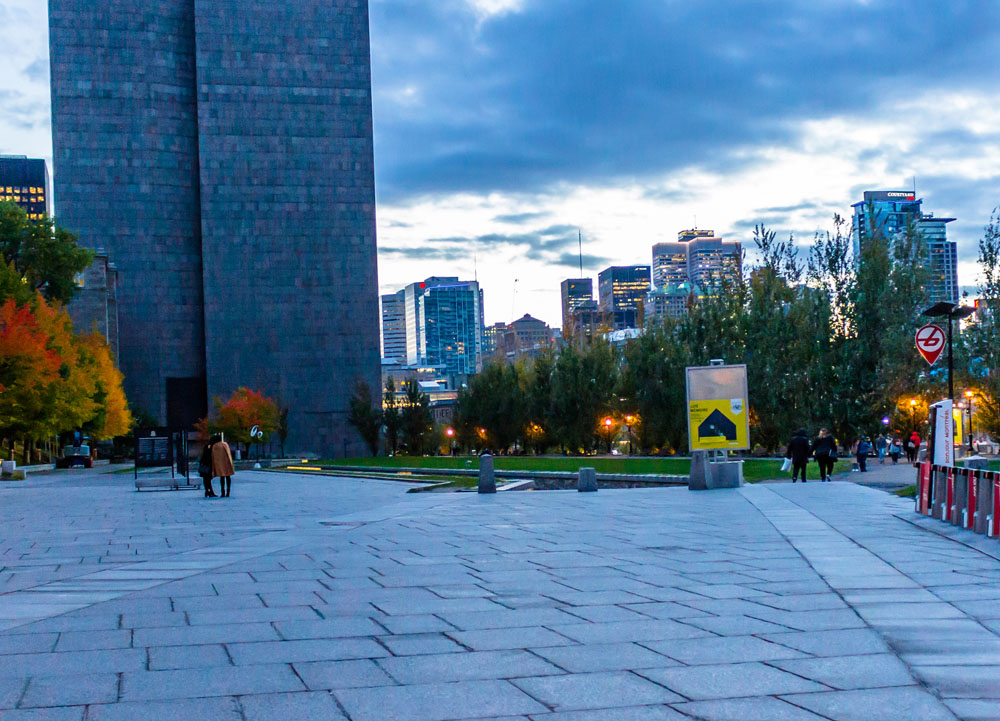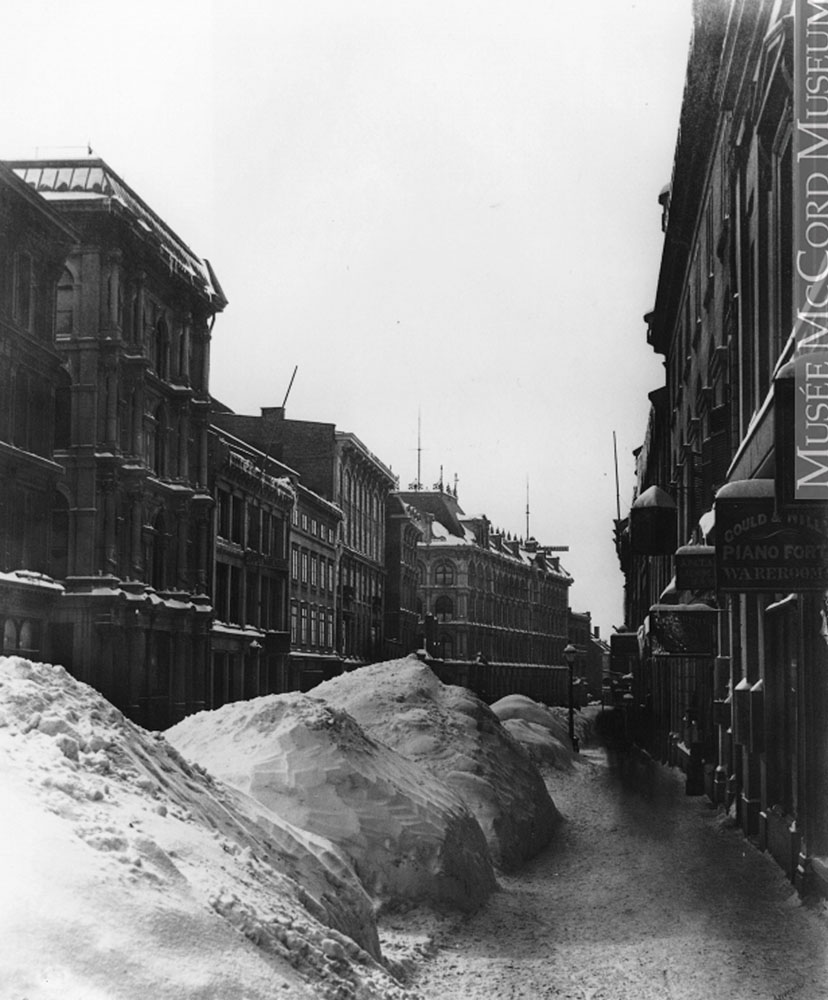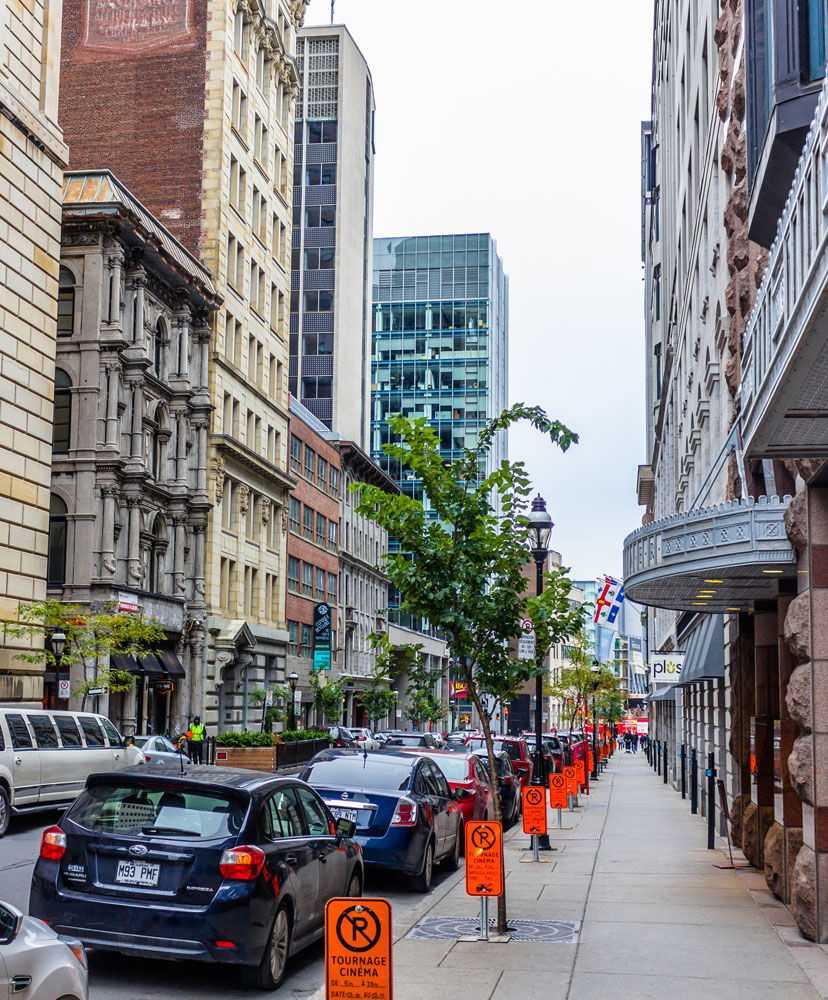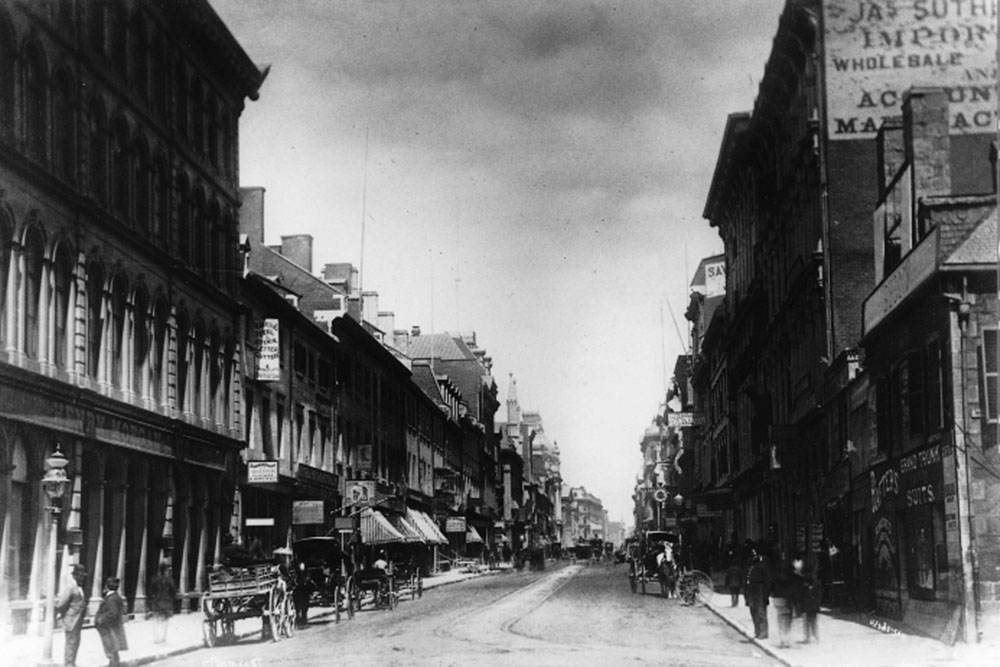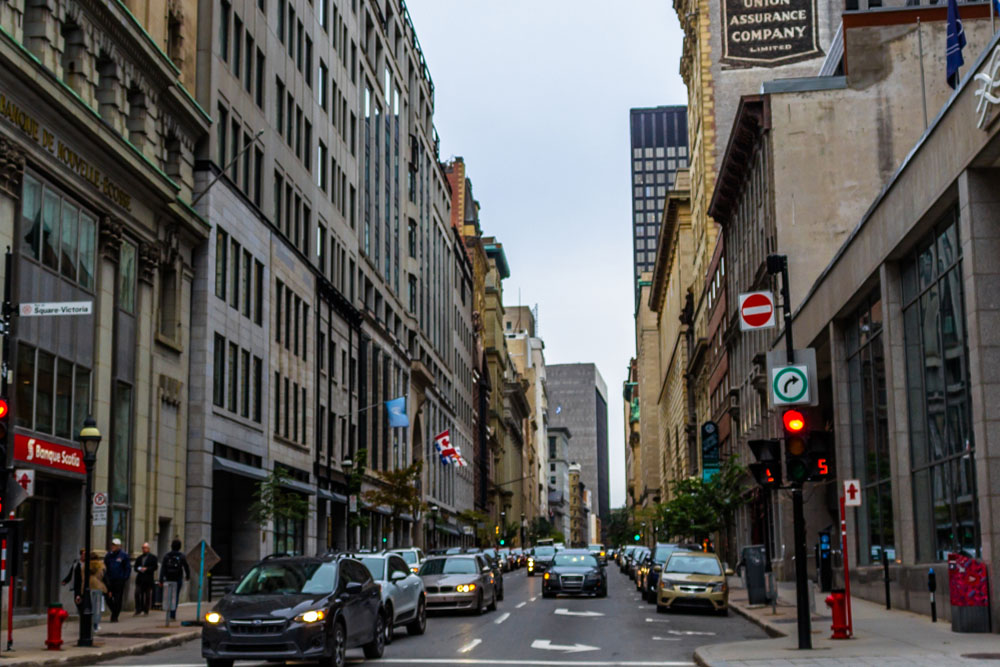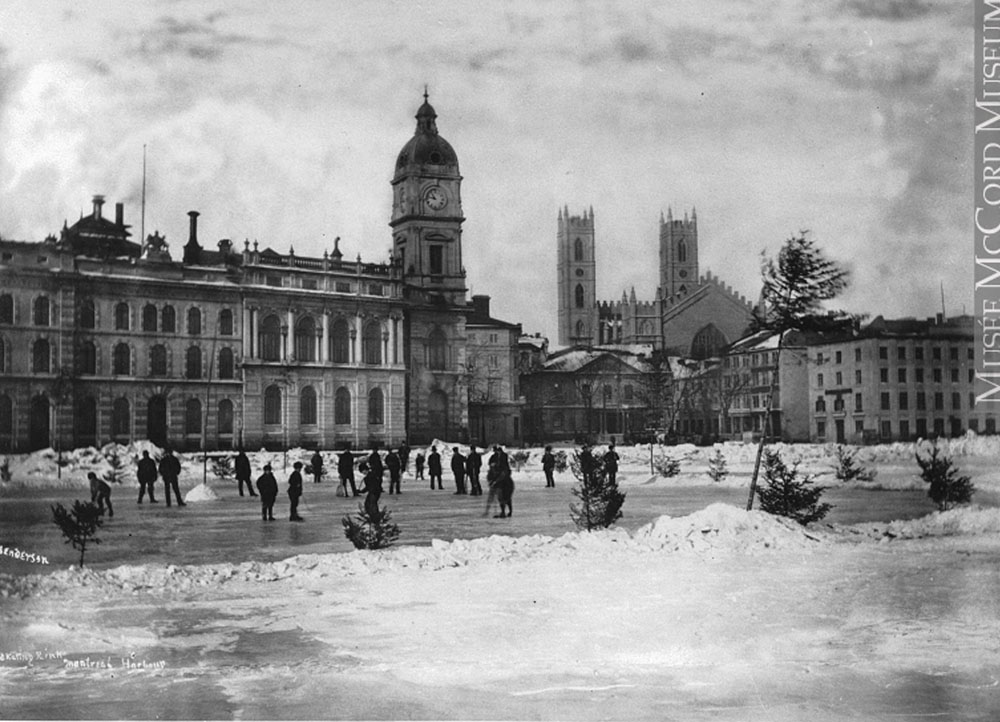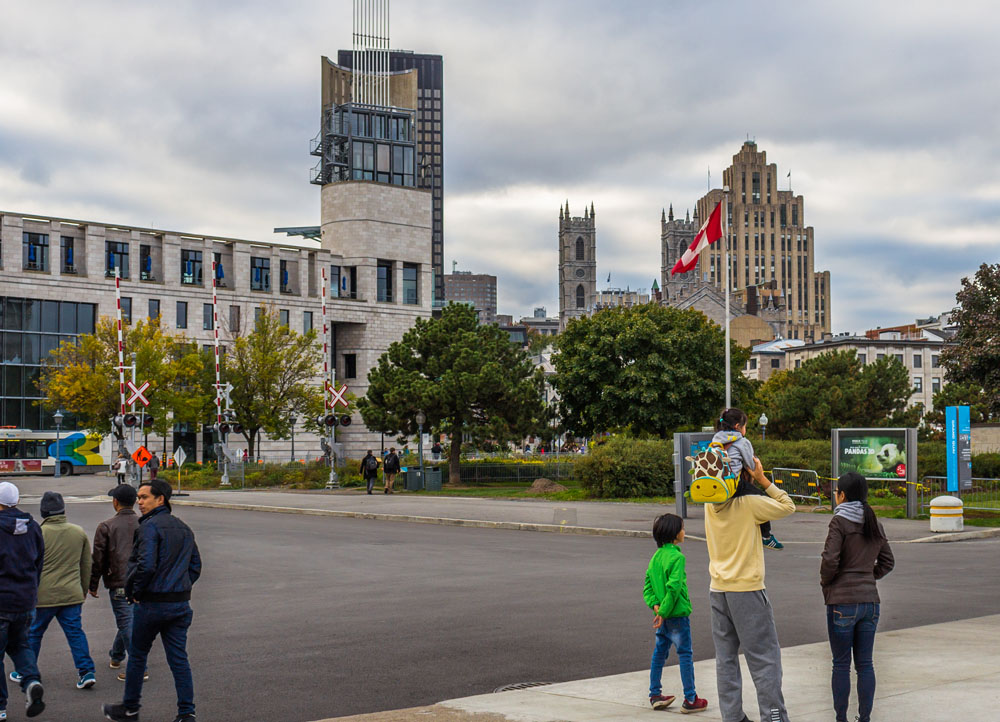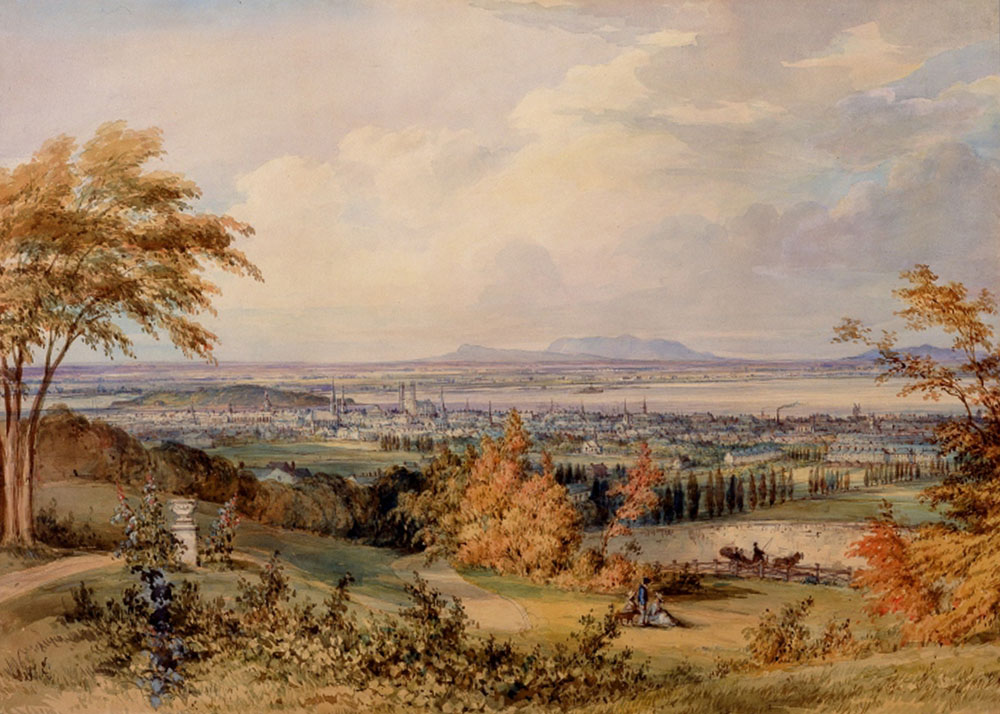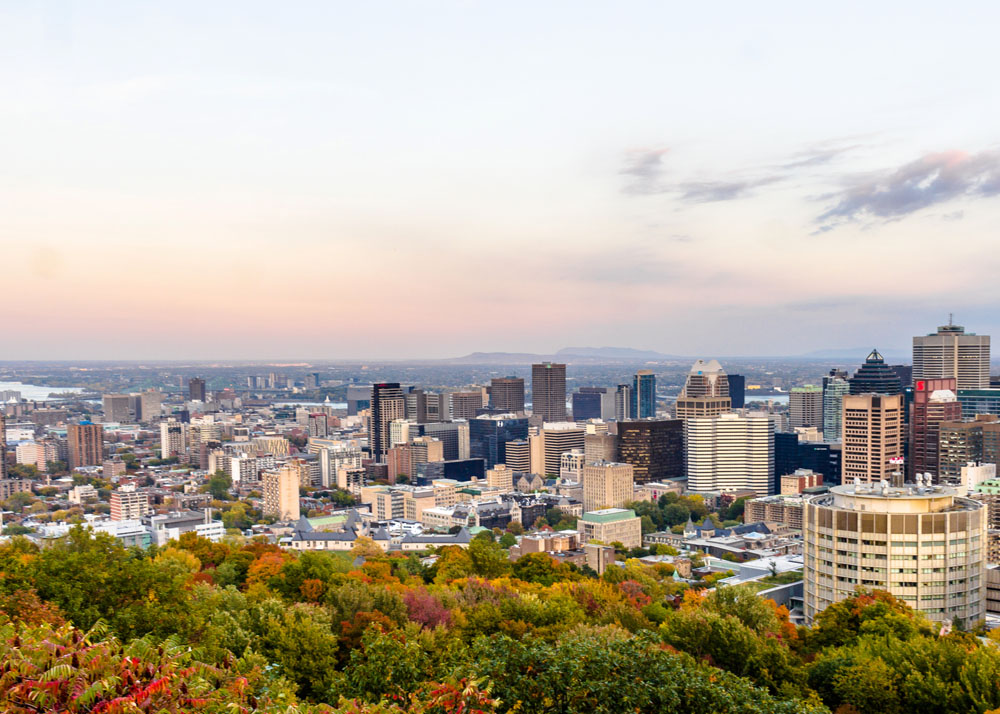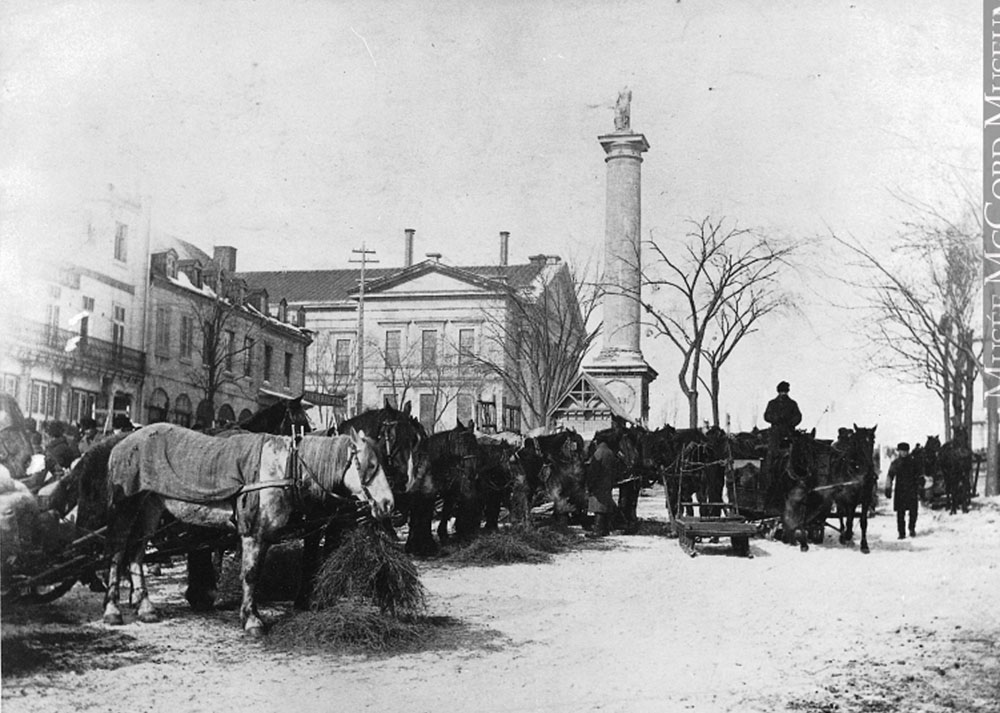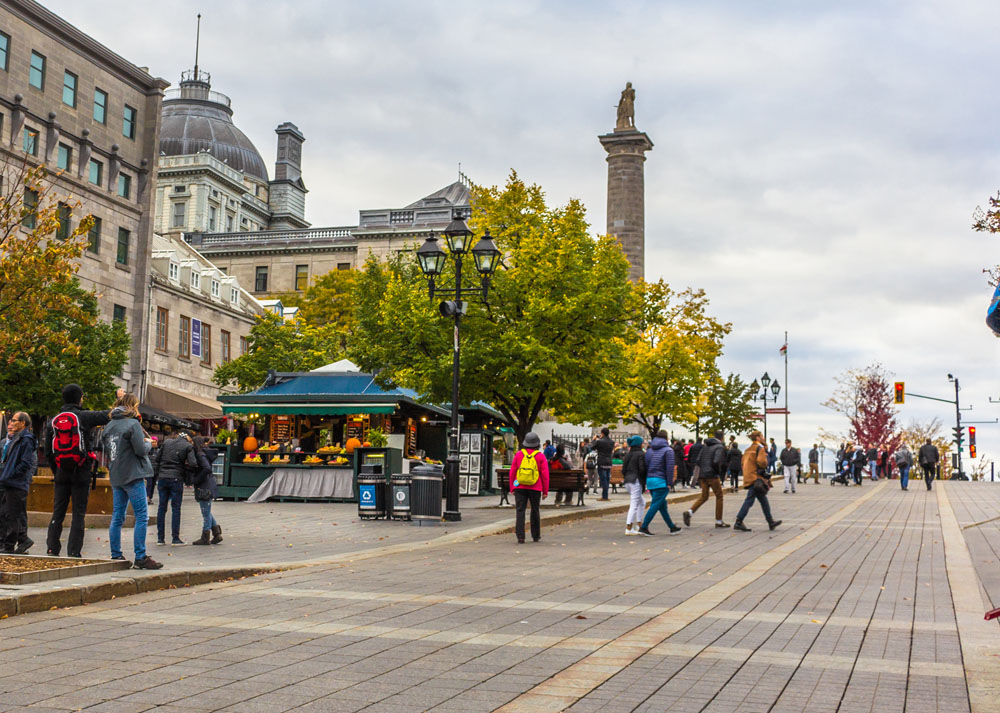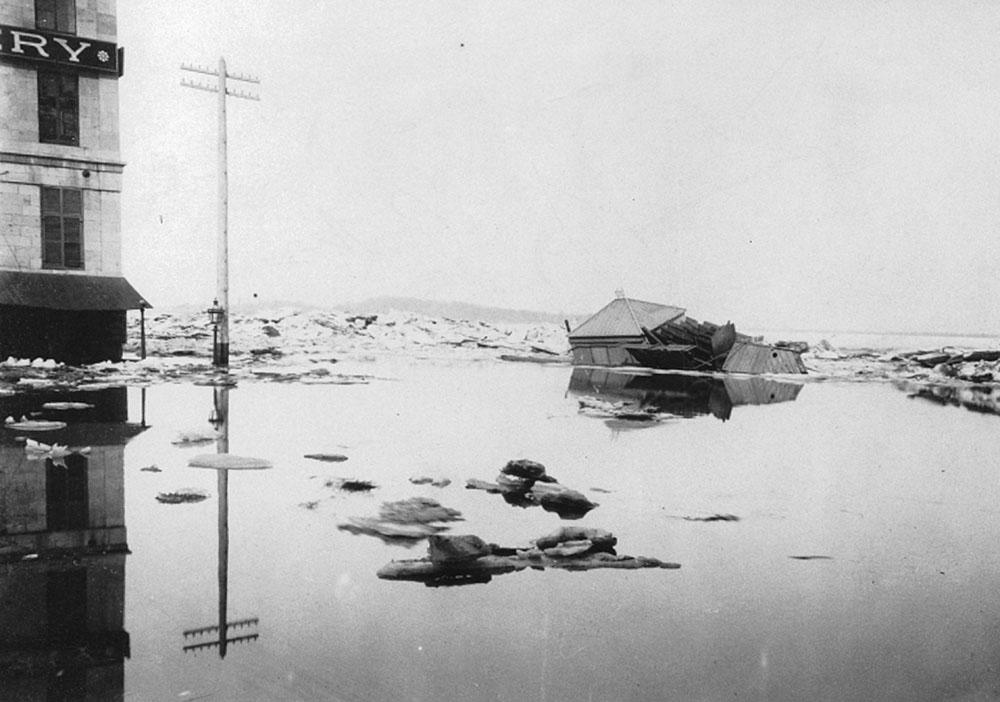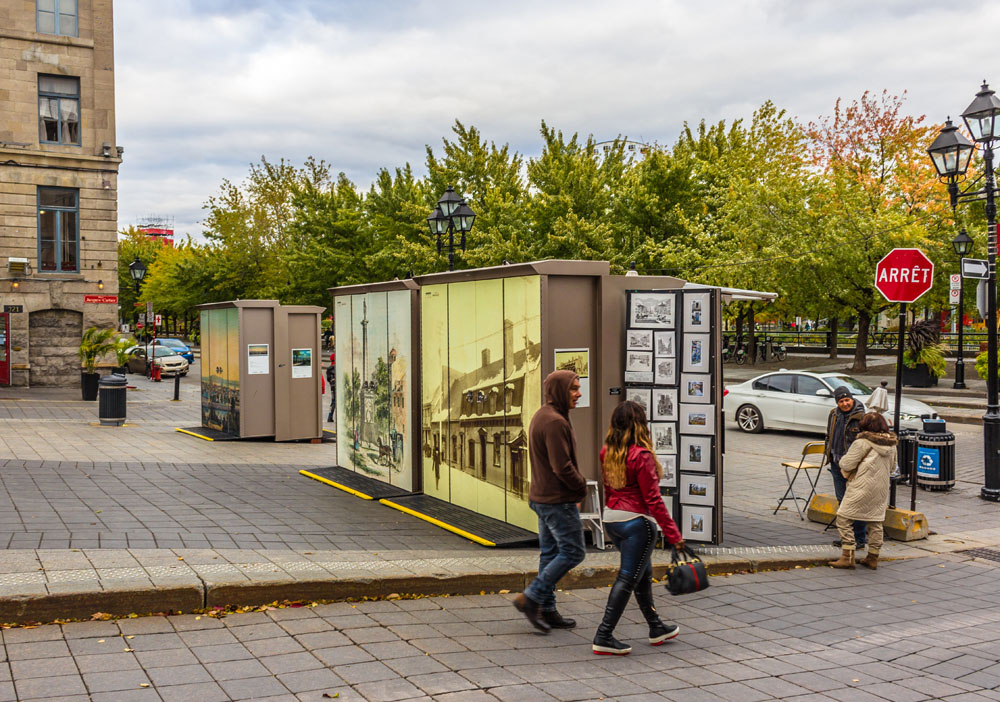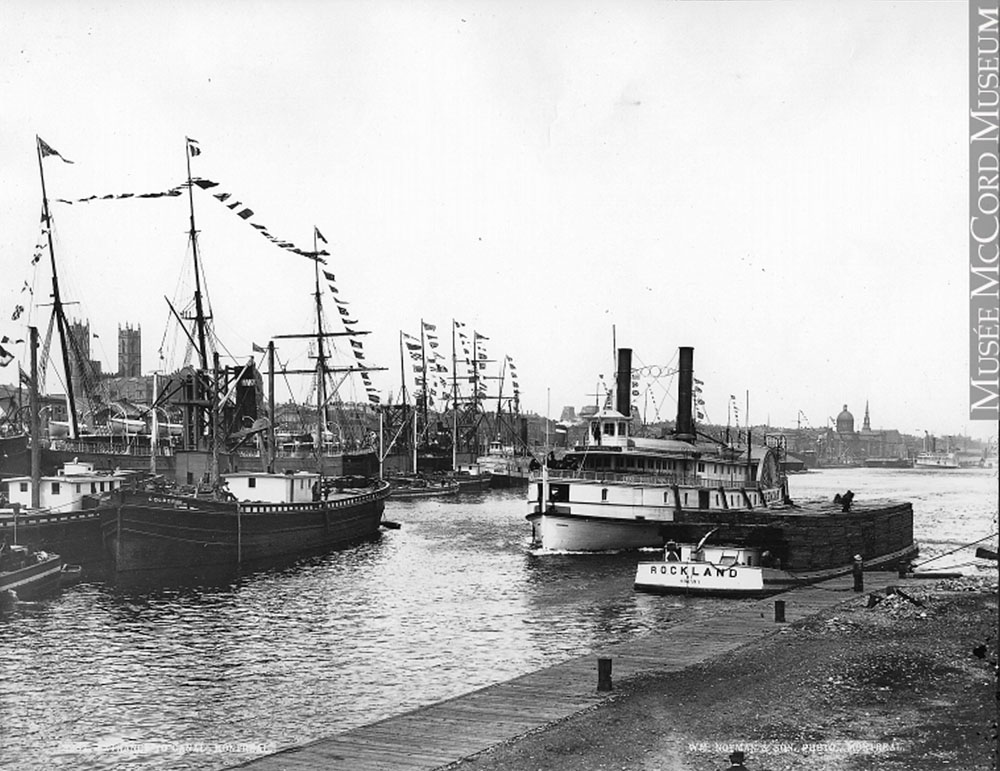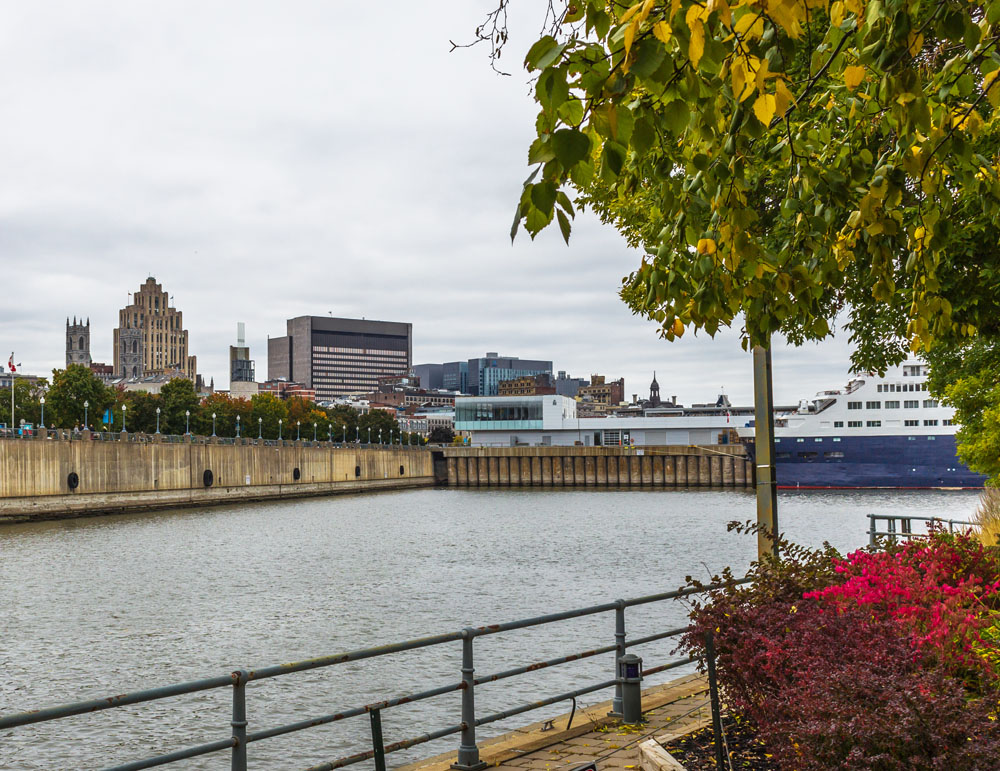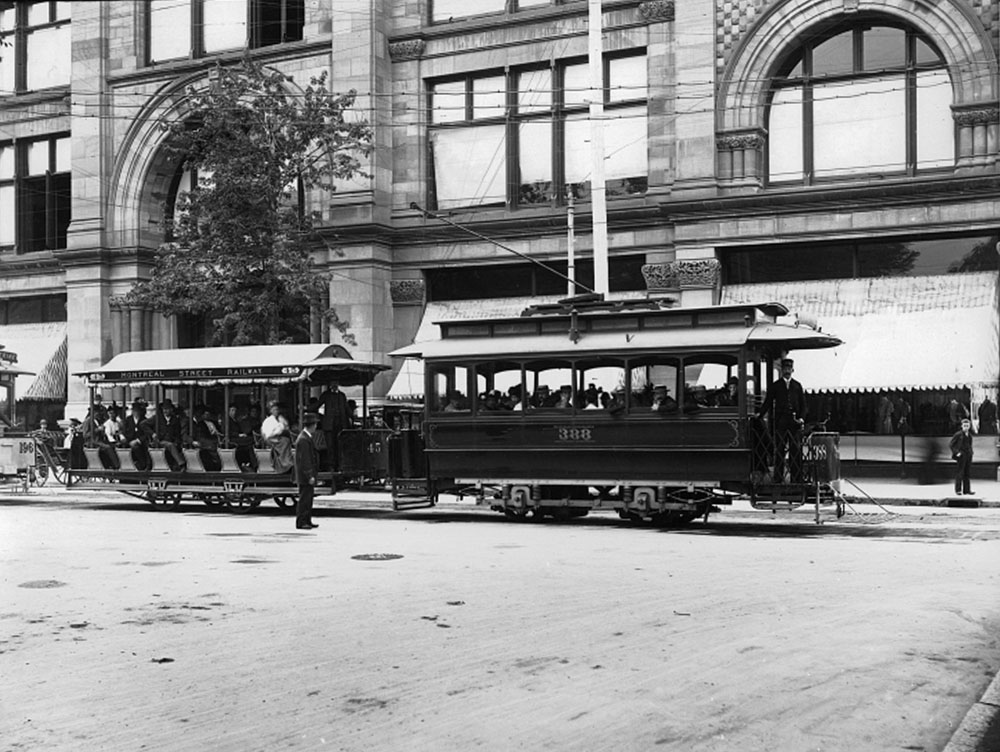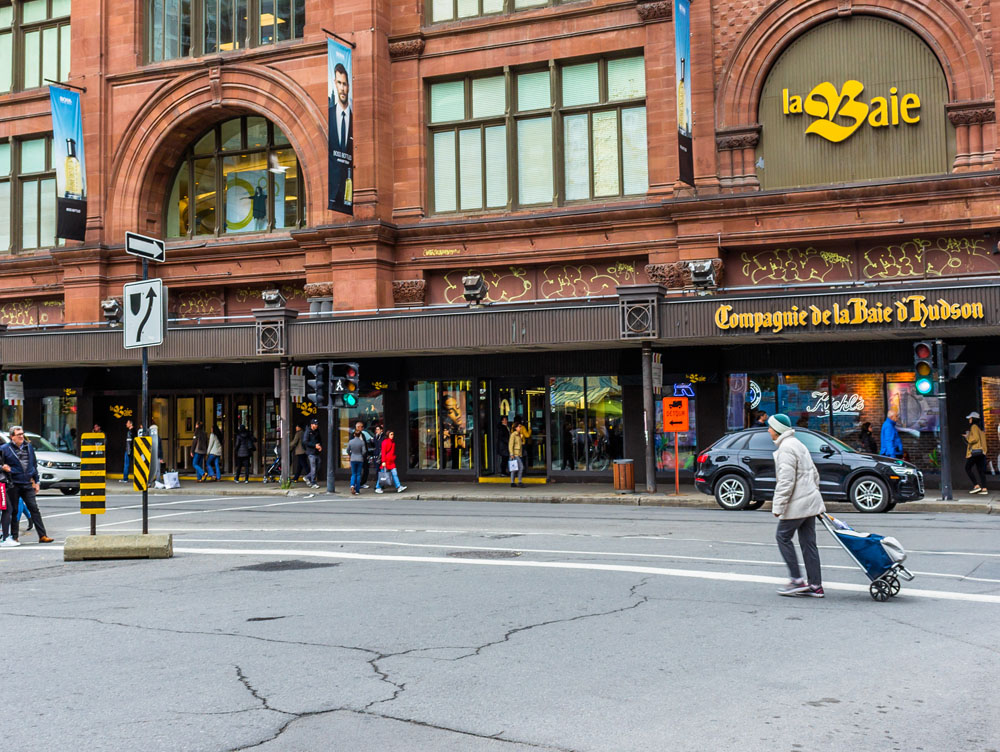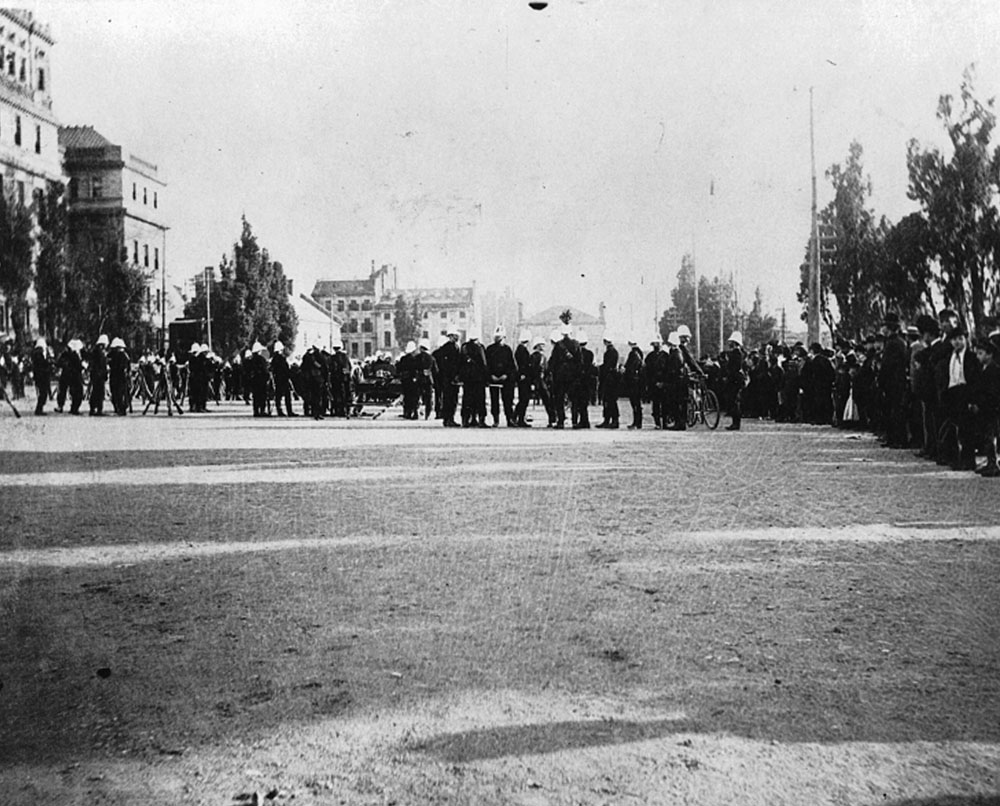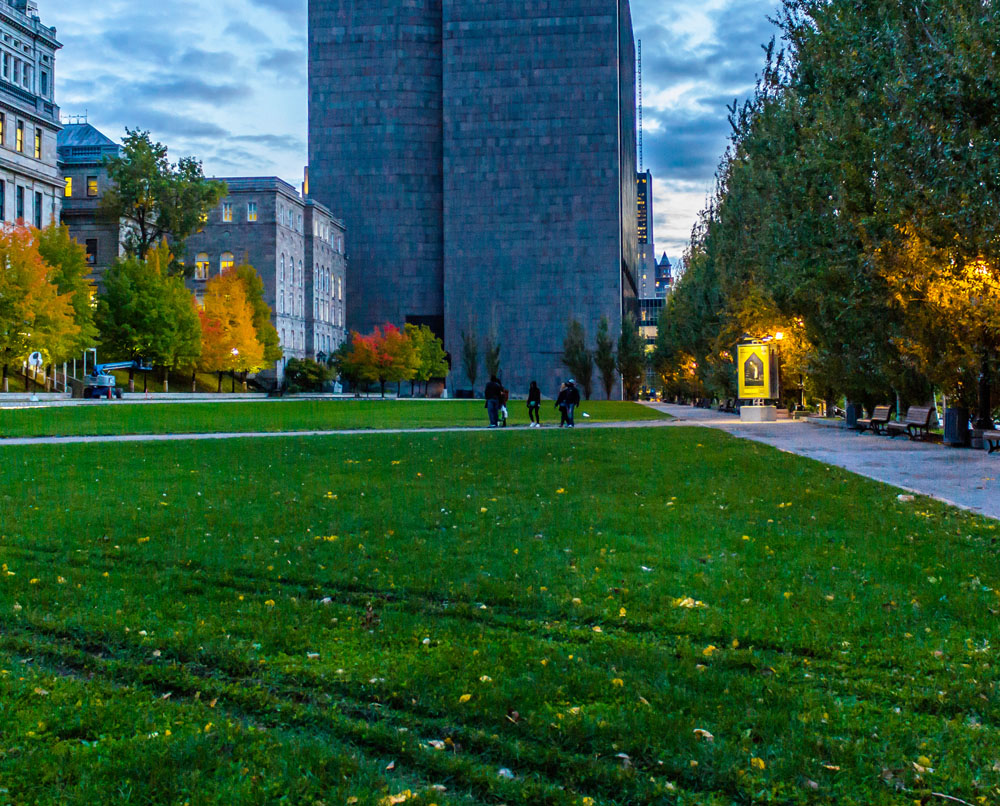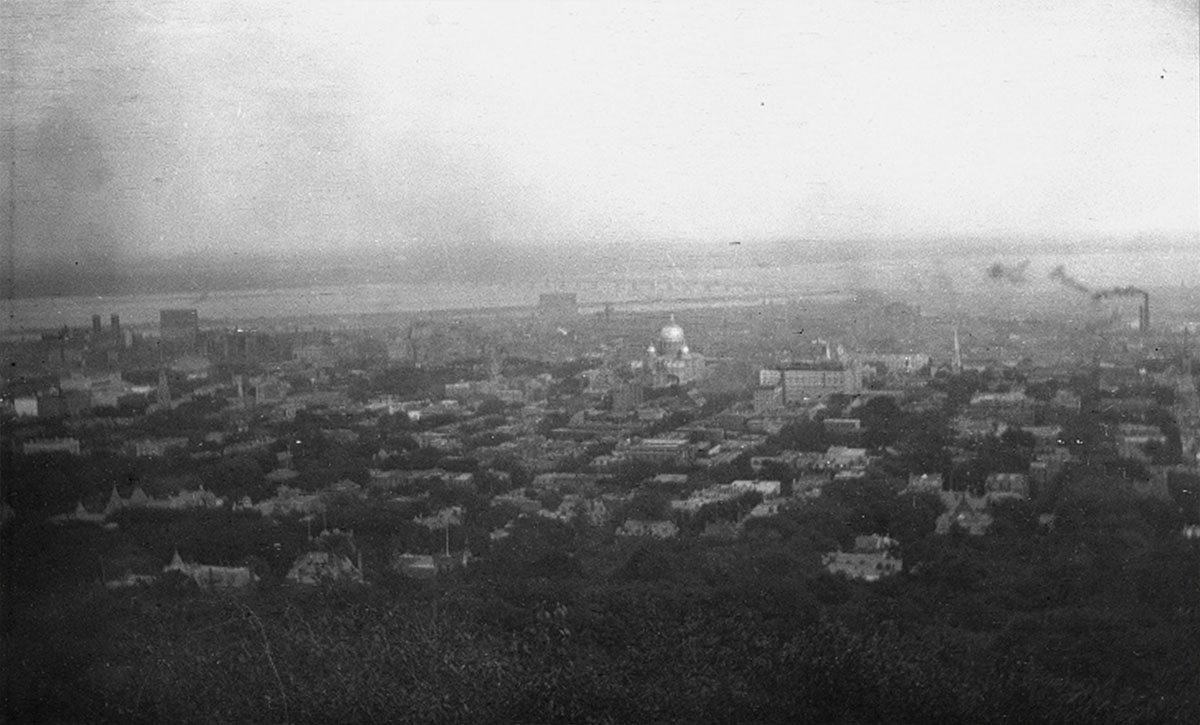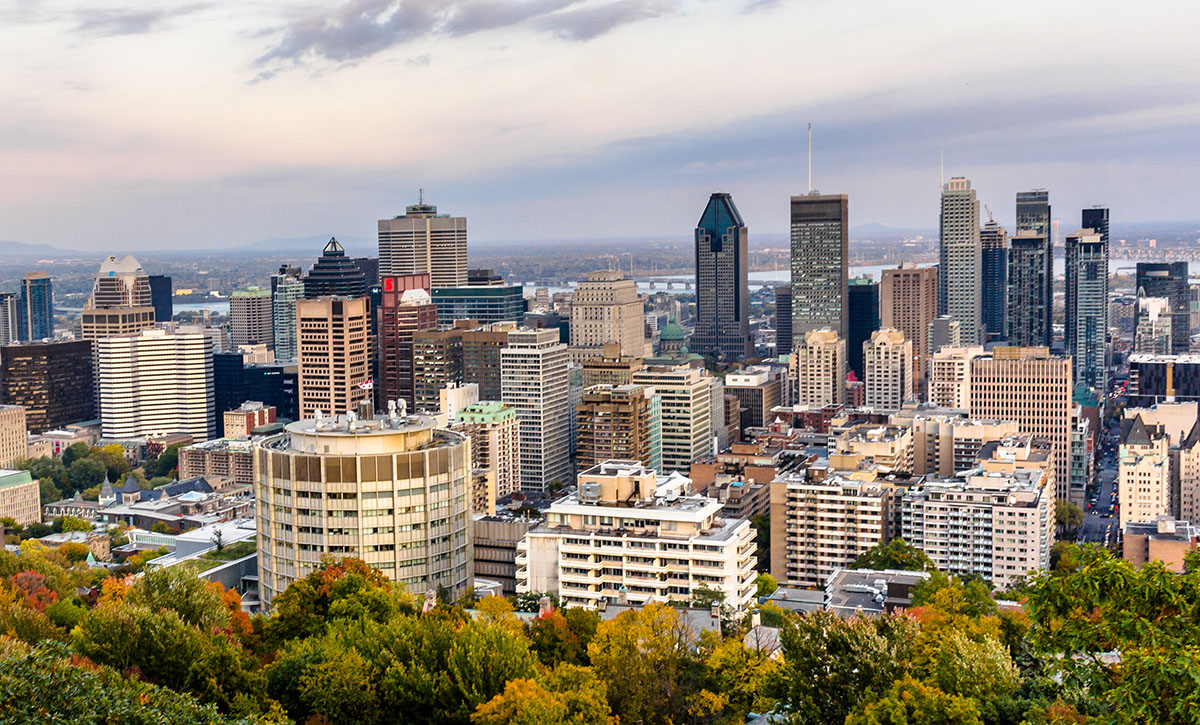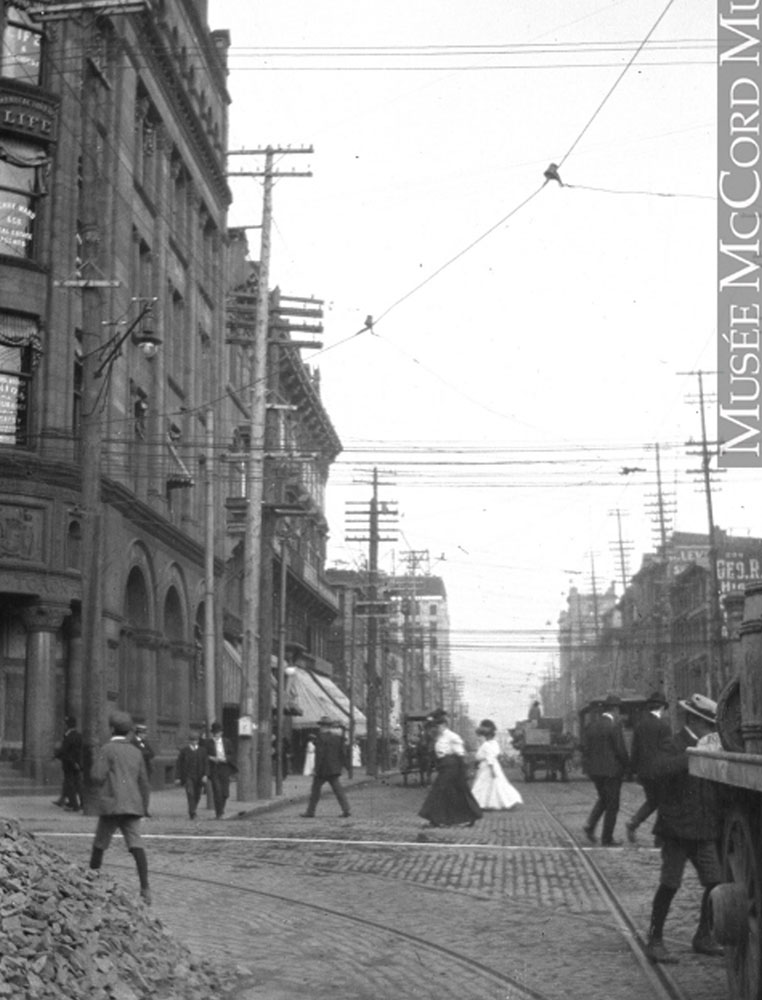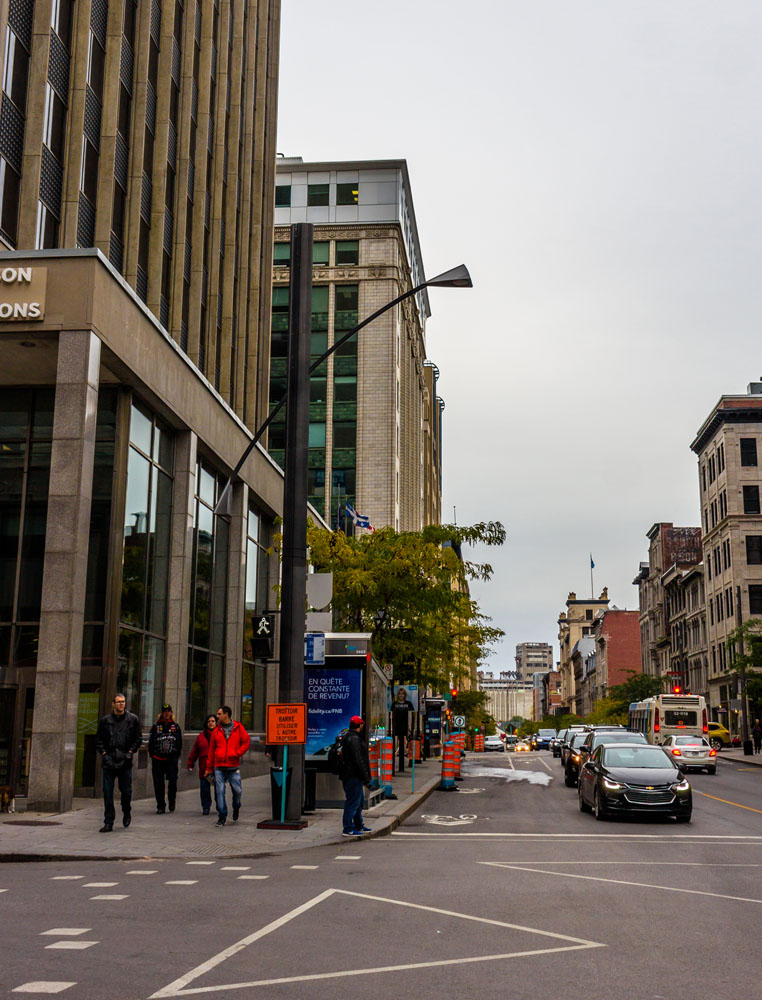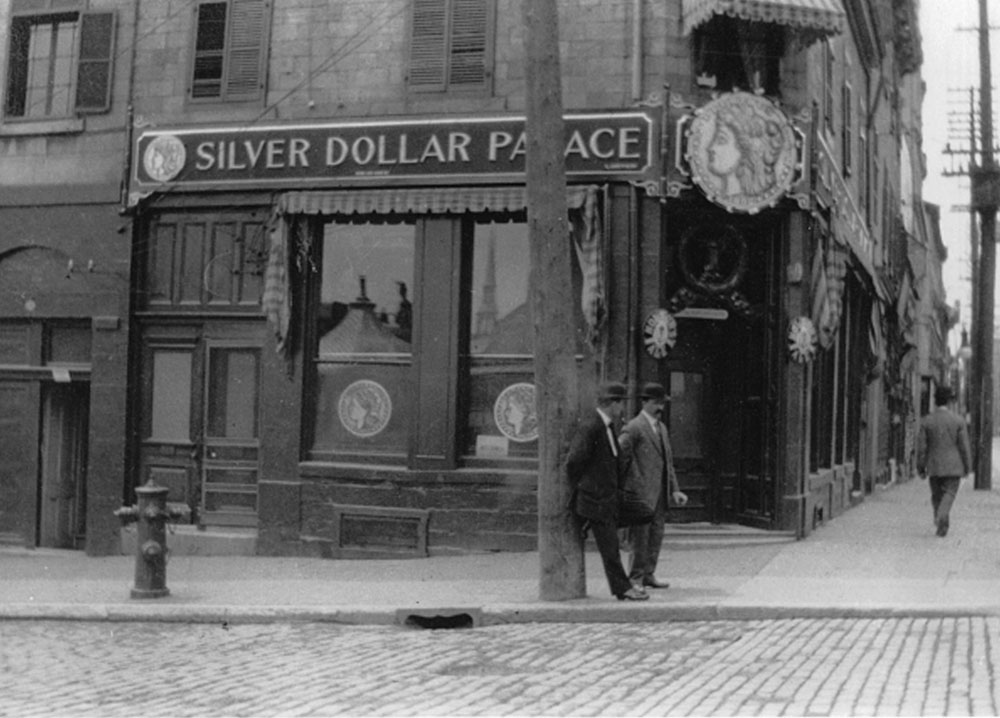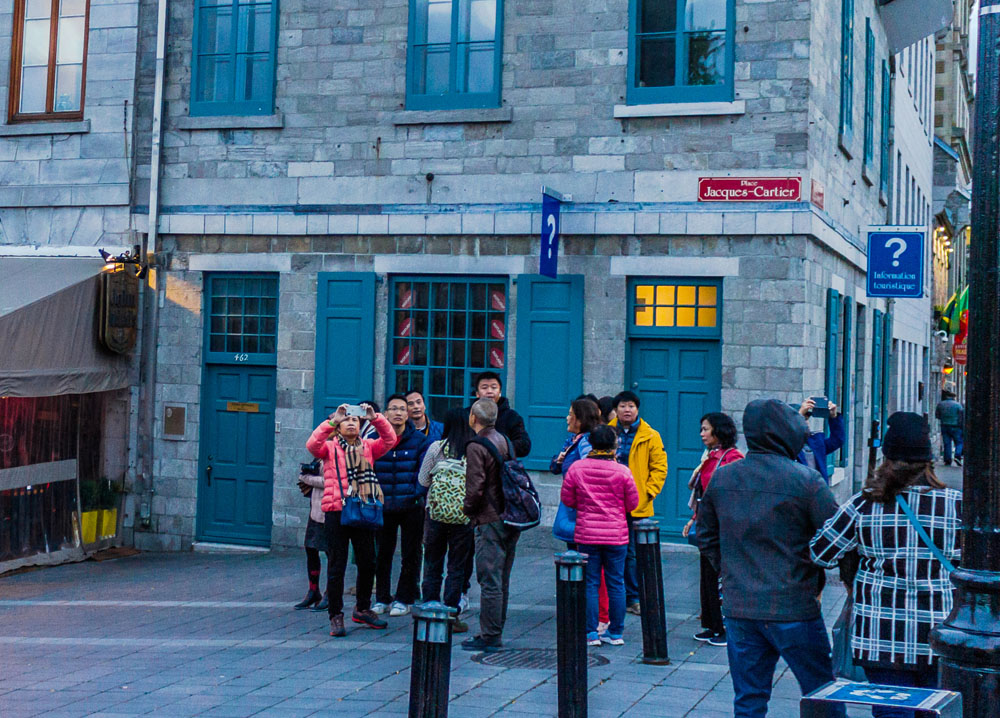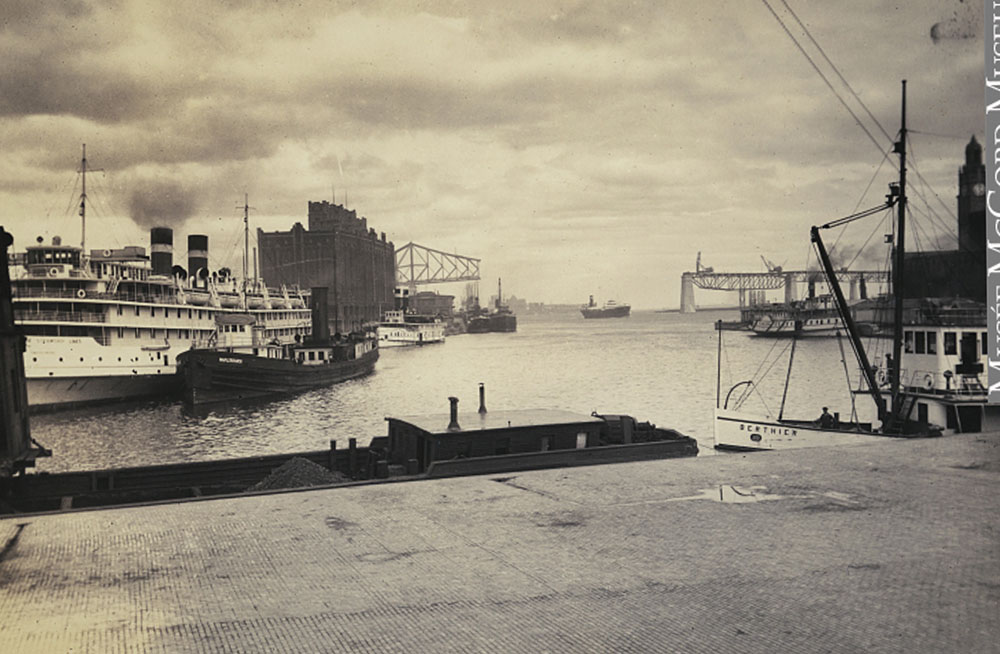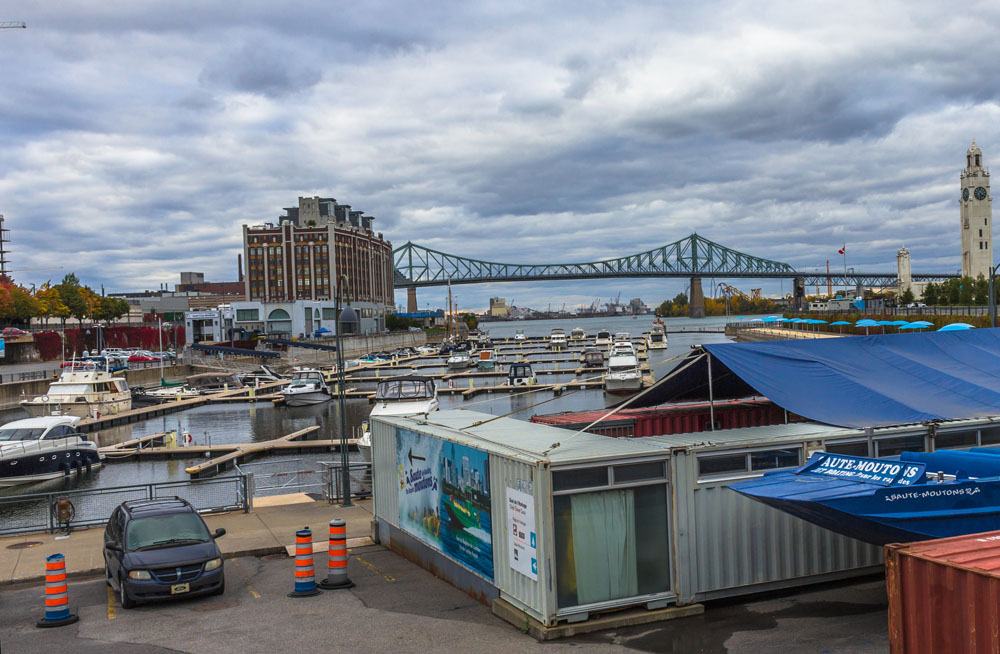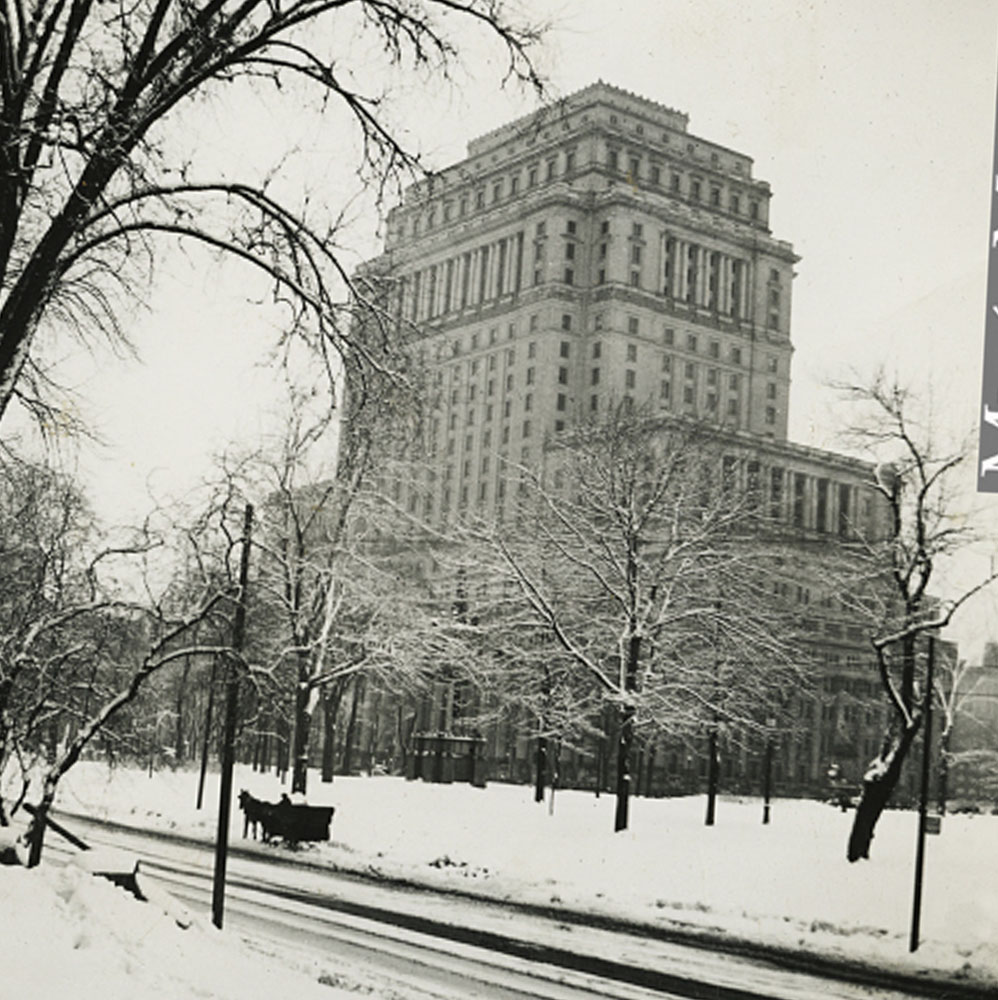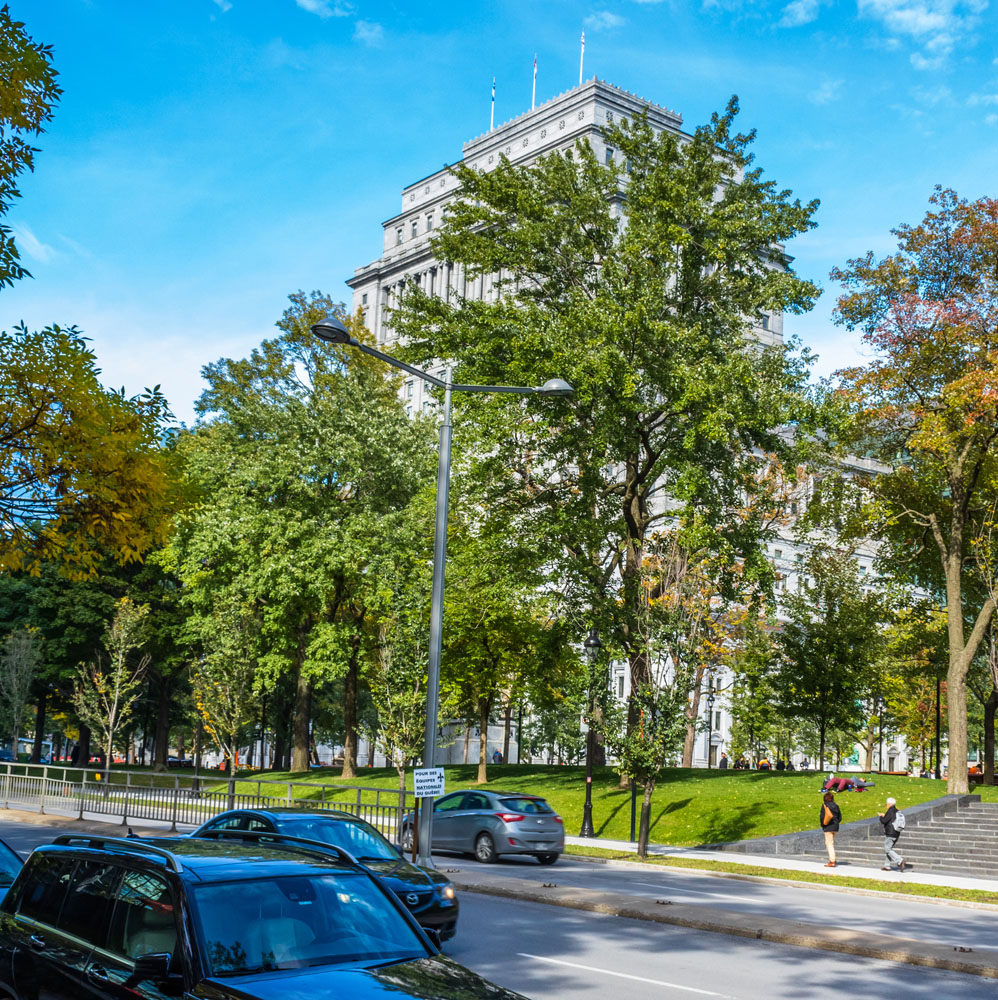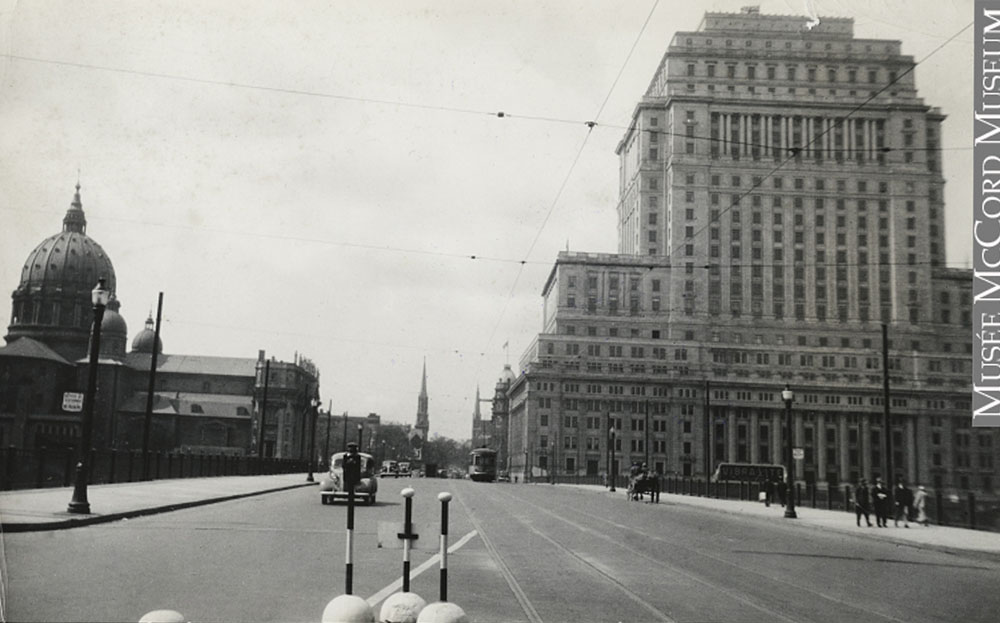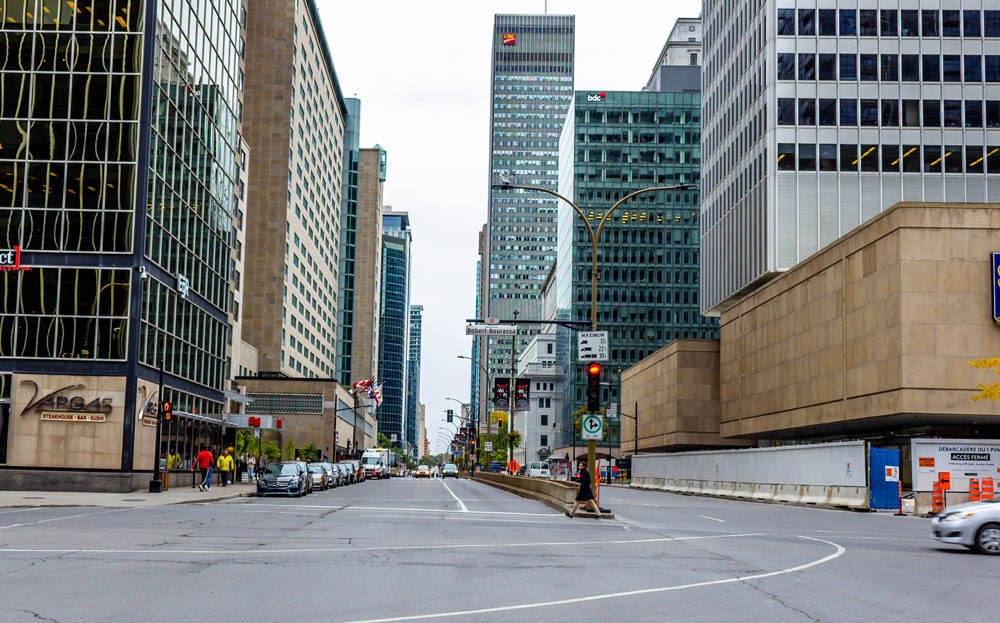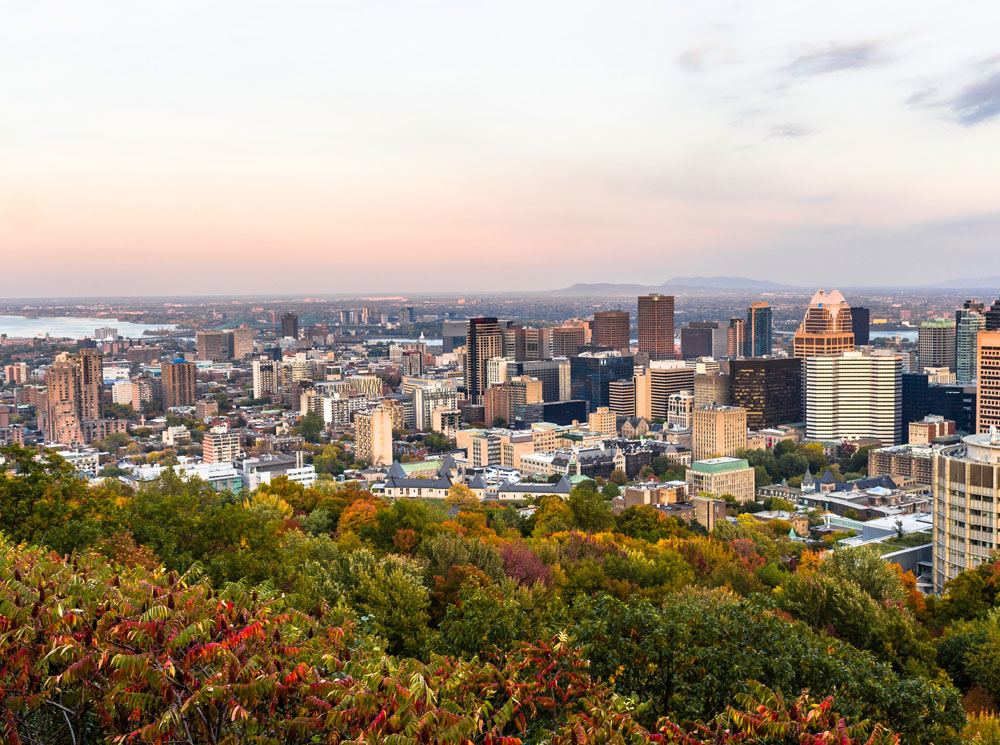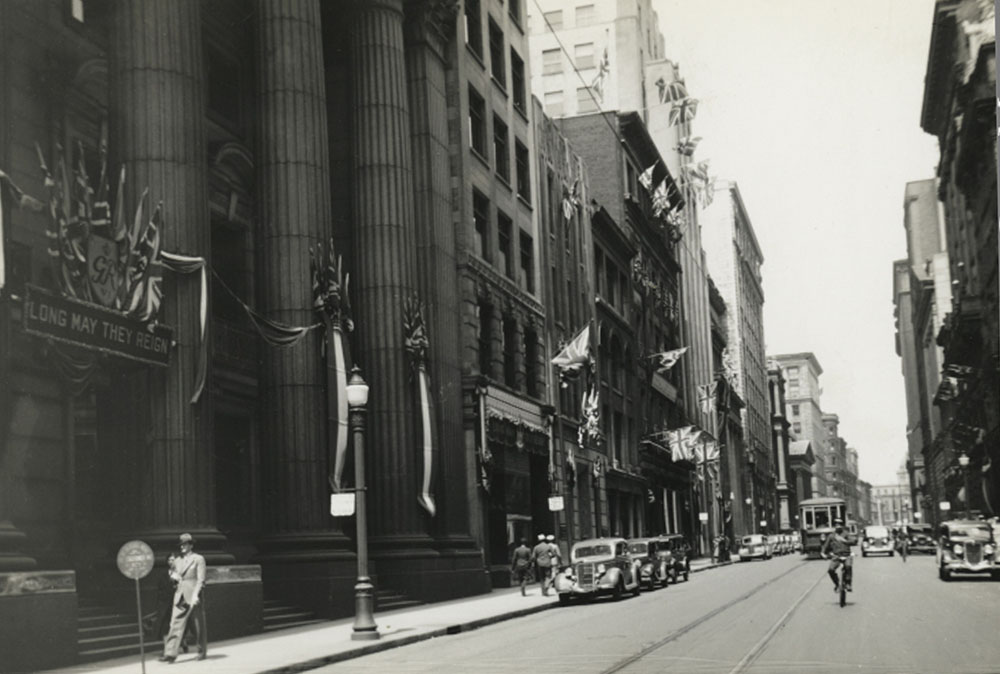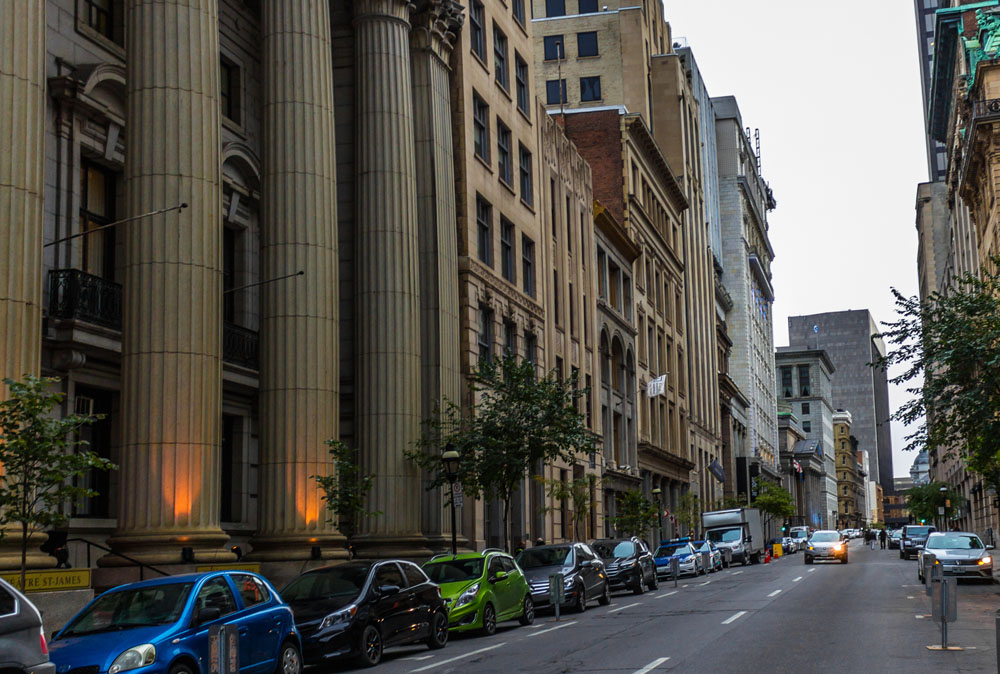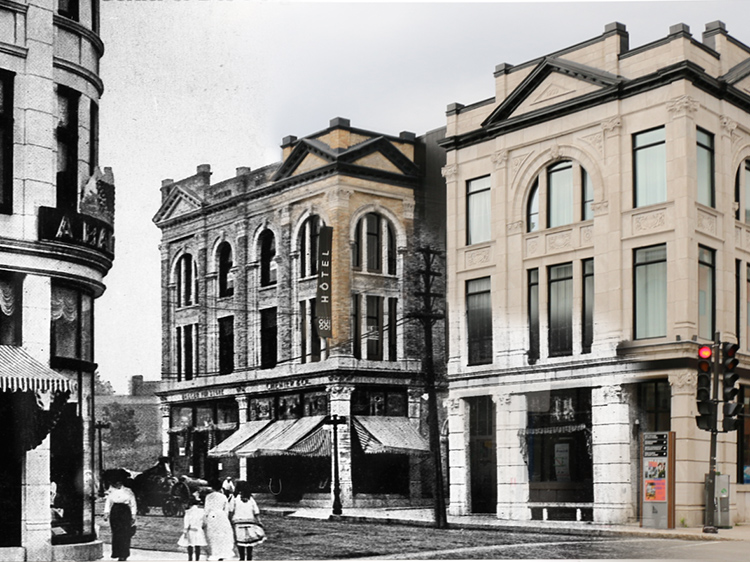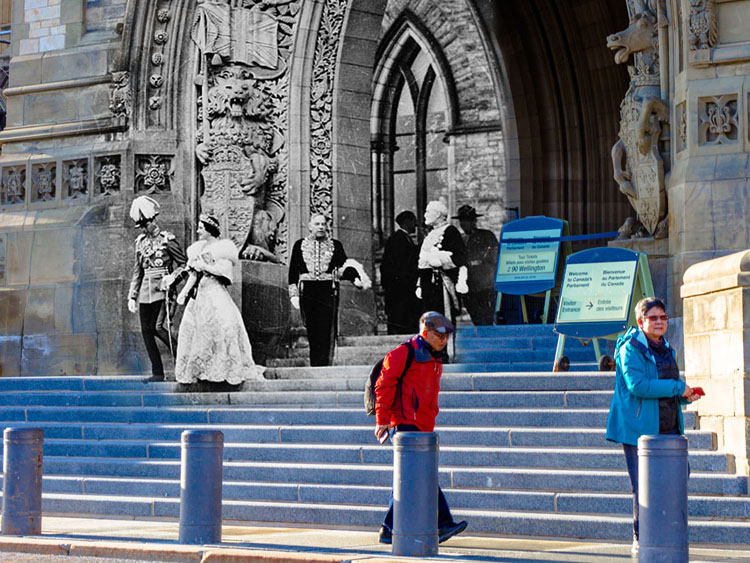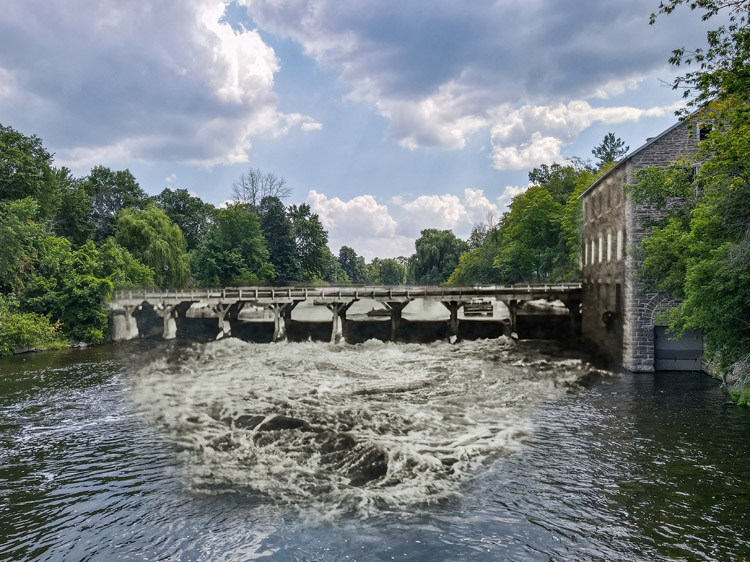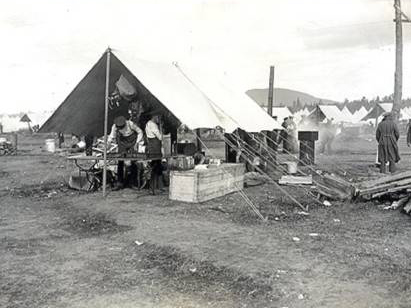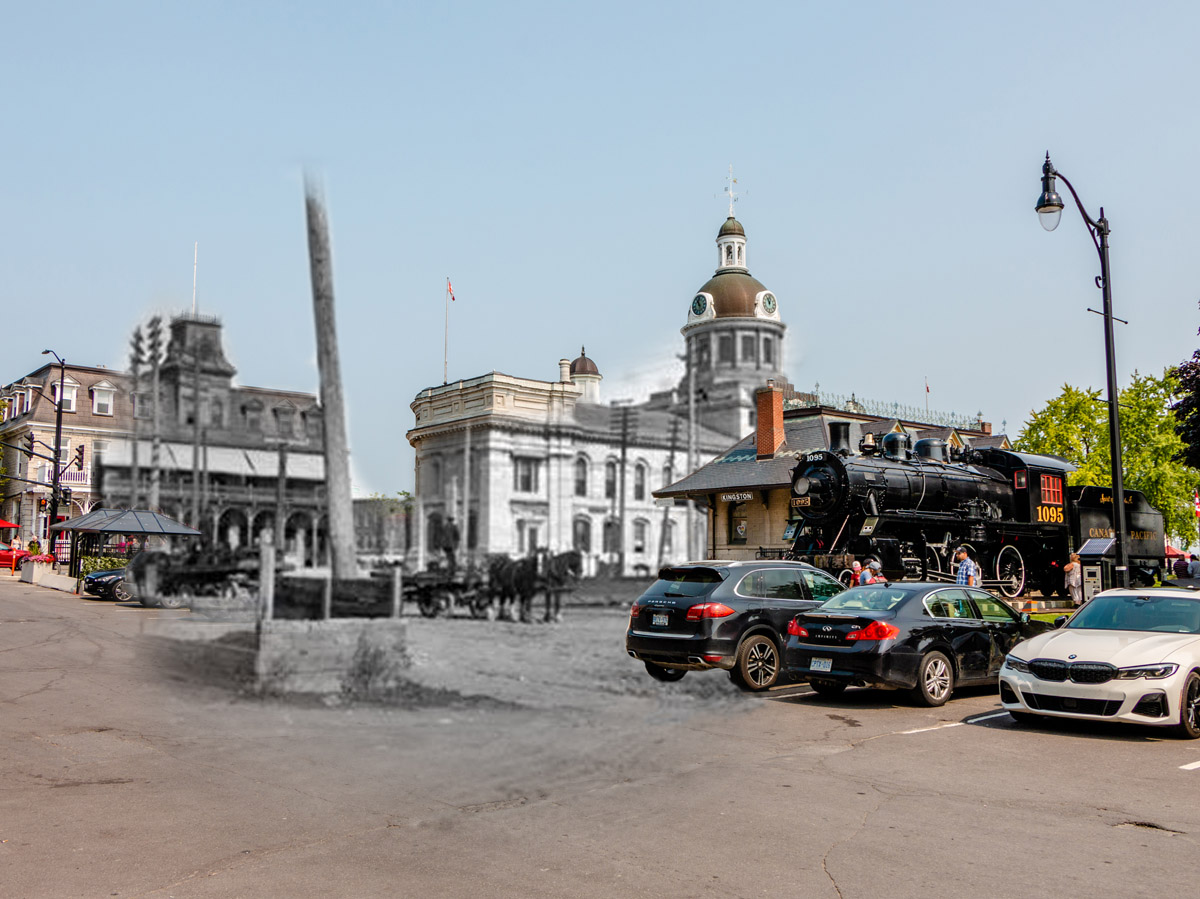Partner City
Montreal
La Metropole
Montreal was founded by the French in 1642 as a mission and fur trade post. After the British Conquest of New France, Montreal grew in importance as a major economic centre, and by 1860 it had surpassed Quebec City as the largest city in Canada, as well as its undisputed economic and cultural centre. Many English and Scottish immigrants settled in Montreal alongside the original French-Canadian inhabitants, giving the city a strong Anglophone presence. Since the late 1800s however, most newly arriving Anglophone immigrants moved west into Ontario and the prairies, and Montreal gradually returned to its original French roots. Today it is the largest French-speaking city in the Americas, and the second largest city in Canada.
We respectfully acknowledge that Montreal is located on unceded Indigenous lands and is historically known as a gathering place for many First Nations, including the St. Lawrence Iroquois, Haudenosaunee and Anishinabeg nations. Today, it is home to a diverse population of Indigenous and other peoples.
Tours
Explore
Montreal
Stories
Montreal Receiving Station
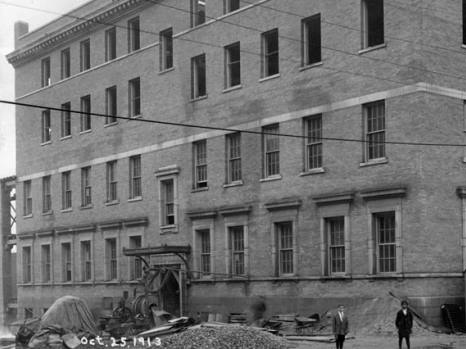
Ukrainian Canadian Civil Liberties Assoc.
Story Location
Today, Montreal is renowned as a multicultural, cosmopolitan city but throughout its history, it has often been a hotbed of cultural conflicts. When Canada entered World War I, there were at least 17,000 to 20,000 Austro-Hungarian immigrants living in the city, largely from Ukraine, along with 10,000 Austrian Jews. They were mostly working class labourers, making a living in mining and railway construction, as well as working seasonally at the steel works and mines in other mining centres in eastern Canada.
These workers often encountered hostility from English and French Canadians, partially due to cultural, linguistic, and religious differences, but also because Austro-Hungarians workers were often willing to perform more dangerous labour for lower wages. As World War I escalated, incidents across the country such as fires and explosions were blamed on Austro-Hungarian immigrants who were thought to be acting as saboteurs on behalf of Austro-Hungary.
* * *
One such incident occurred in Montreal on October 21, 1914 when an explosion leveled a tenement block, primarily occupied by working class immigrants. The explosion and resulting fire killed two men, injured many more, and caused a wave of panic to ripple across the city. Rumors claimed that the two dead men caused the explosion when a bomb they were storing for more "nefarious" purposes accidentally detonated. Although an investigation proved that the explosion was due to a faulty gas line, many remained convinced it was the action of enemy spies. The mayor even received a letter shortly after that warned of an organized and heavily armed group of German and Austro-Hungarian nationals who planned to enact more violence and destruction in the city.1
Despite the suspicion and hysteria of the general public, the government was initially more skeptical of the rampant claims of enemy sabotage. Investigations by the North West Mounted Police and other police forces turned up little evidence that Austro-Hungarian immigrants were allied with the enemy. One immigration report from northern Ontario reported, "It seems that as long as the majority of these foreigners are kept in work there will be no cause for anxiety" and that the German and Austro-Hungarian immigrants there were "quiet and inclined to mind their own business."2
Despite the lack of evidence, both government officials and the public grew increasingly nervous about the loyalties of the so-called "enemy aliens" in their midst. Anyone who was a reservist for an enemy nation was considered an enemy combatant and a threat to Canadian security that needed to be contained. On August 13, the SS Ruthenia, a passenger ship from Antwerp, docked at Montreal and was promptly boarded by a group of police. They arrested 13 of the ships' crew who were identified as enemy reservists and detained them at the immigration building as prisoners of war. Another 22 German and Austro-Hungarian reservists were already in custody - they had been arrested trying to cross the border into the United States.3
The immigration building on rue St Antoine had become the first official internment site as enemy reservists were taken there in increasing numbers. However, the immigration was not a suitable place to keep internees long term. As late August grew into September and beyond, several internment camps opened in quick succession across the country. For government officials, the camps could not be built fast enough.
Discrimination towards those of enemy nationality and an economic depression had put tens of thousands of German and Austro-Hungarian immigrants out of work. The situation was particularly dire in Montreal where an 1/8th of the Austro-Hungarian population was unemployed. The Austro-Hungarian consul general, Hermann Hann was particularly concerned about the risk of starvation and approached the Canadian government about providing aid to the destitute. However, the scale of the problem soon overwhelmed the aid plan that Hann had initiated. Within weeks, 4,000 people registered for aid.
While the depression was hard on everyone, "enemy aliens" were the hardest hit. Employers preferred to hire native-born Canadians over those from enemy nations, and were often pressured by employees to fire enemy aliens. In Montreal, a group of English-speaking French and Italian waiters pressured major hoteliers to fire over 400 German and Austro-Hungarian employees so that Canadian born men could replace them.4
The Austro-Hungarians were effectively stuck. While they could not find employment in Canada, they were also prohibited from crossing the border into the United States where they could be employed. Montreal industrialist Sir Thomas Shaughnessy wrote a letter to the Minister of Agriculture about the predicament, "If these men be permitted to reach a starving condition they will be dangerous, and, beyond doubt, some steps should be taken to deal with the problem. They are practically prisoners of war, and cannot leave Canada." He further recommended that detention centres be set up across the country, "so that any German or Austrian who applies for relief of is out of employment and cannot take care of himself, may be removed there and held under military supervision until the war is over, or employment offered."5
Even as this question was under debate at the upper levels of government, it became clear that internment facilities at Montreal, Kingston, and Toronto were at capacity and no longer sufficient for the increasing numbers of internees. In December, the first group of 100 internees from Kingston and Montreal were shipped to the Petawawa military camp outside of Ottawa. Internment officials immediately set them to work clearing land and winterizing the camp for the 600 internees that were to follow.6 As winter of 1914 set in, Canada's internment operations were truly underway and had shifted from holding enemy aliens to setting them to work. Increasing numbers of enemy aliens were arrested in Ontario and Quebec and sent to camps in the west where they were put to work clearing land for some of the nation's most stunning national parks. For those arrested in eastern Canada, Montreal was the receiving station that processed them all.
2. Ibid, 19.
3. Ibid, 44.
4. Ibid, 70.
5. Ibid, 73.
Then and Now Photos
Funeral of General D'Urban
1849
An honour guard lines the street as the funeral cortege of General Benjamin D'Urban passes by. D'Urban was a British General who fought throughout the Iberian Campaign in the Napoleonic Wars. Afterwards he served as lieutenant governor in a variety of British colonies, including British Guiana, Antigua, and South Africa. His racist and brutal policies towards black people in South Africa prompted a parliamentary investigation, and the resulting public outcry led to his dismissal. In 1847 he was appointed supreme commander of British forces in North America, and kept his headquarters in Montreal until his death in 1849.
Champ de Mars
1866
The Champ de Mars was Montreal's main military parade ground. It stands on part of Montreal's old city walls, which were demolished in the early 1800s when they were no longer thought necessary.
St. Jacques Snowdrifts
1869
Snow piled high in a commercial area on St. Jacques Street.
St Jacques Street from Victoria Square
1870
A view east down Saint Jacques Square. A few carriages line the side of the road, which is comparatively empty by modern standards.
Skating Rink
1876
A skating rink has been set up at the Old Port of Montreal. The building in the back is today the Pointe-a-Calliere Museum
A Pastoral Scene
1830s
A painting by James Duncan the perspective of Mount Royal showing the city, which has yet to grow much beyond into the fields surrounding Old Montreal.
Nelson's Column
1884
Nelson's Column towers over horses and buggies in Cartier Square. Erected in 1809, it commemorates Admiral Horatio Nelson and his decisive naval victory over Napoleon at the Battle of Trafalgar only four years before. It's the second oldest Nelson's Column in the world, and the oldest war monument in Canada.
Flooded Cartier Square
1886
A huge flood after the spring breakup has submerged much of the lower part of Cartier Square.
The Lachine Canal
1890
Paddlewheelers and sailboats moored near the entrance to the Lachine Canal.
Streetcars in front of the HBC Store
1895
Two crowded streetcars stopped in front of the Hudson's Bay Company store on Saint Catherine Street. Beginning in 1861, Montreal's trams were drawn by horses, but in 1892 the horses were replaced with electric power, one of the first cities to adopt this new technology. The Montreal Street Railway was known for being at the forefront of innovation, and pioneered the "Pay As You Enter" (P.A.Y.E.) for collecting fares, a system used by virtually every transit system in the world today. Before that a conductor would walk up and down the aisle collecting fares from passengers. Montreal's electric streetcars were finally phased out in 1959.
On the Parade Ground
1897
Soldiers in the distinctive colonial style pith helmets are milling about on the Champ de Mars.
View to the Southeast
McCord Museum Musee McCord M2003.28.1
1907
A view of Montreal towards the southeast.
Crossing St. Jacques Street
1907
Pedestrians crossing a busy St. Jacques street. Notice the cobblestone street and streetcar rails.
The Silver Dollar Palace
1914
Two men loiter on the sidewalk in front of the Silver Dollar Palace, at the top of Jacques Cartier Square.
Building Cartier Bridge
McCord Museum M2011.64.2.2.201
1928
Looking towards the Cartier Bridge as it is under construction, from Victoria Pier.
The Sun Life Building
1930
The massive Sun Life Building once dominated Montreal's skyline. At the time of its completion in 1931 it had the largest square footage of any building in the British Empire.
Dorchester Street Bridge
1931
A couple cars and a streetcar on the Dorchester Street Bridge during the Great Depression. The skyscraper at right is the Sun Life Building, which was just completed when this photo was taken. When it was finished it had more square footage than any other building in the British Empire.
Southeast Vista
1935
Looking southeast across Montreal. In the foreground is McGill University's campus, and in the distance you can see the cantilever style Jacques Cartier Bridge, which was completed in 1930, a few years before this photo was taken.
Canadian Bank of Commerce
McCord Museum M2011.64.2.2.372
1938
Looking down James Street during a royal visit by King George VI in the lead-up to World War II. The buildings have been decorated with banners for the occasion. The building on the left is the Canadian Bank of Commerce.

